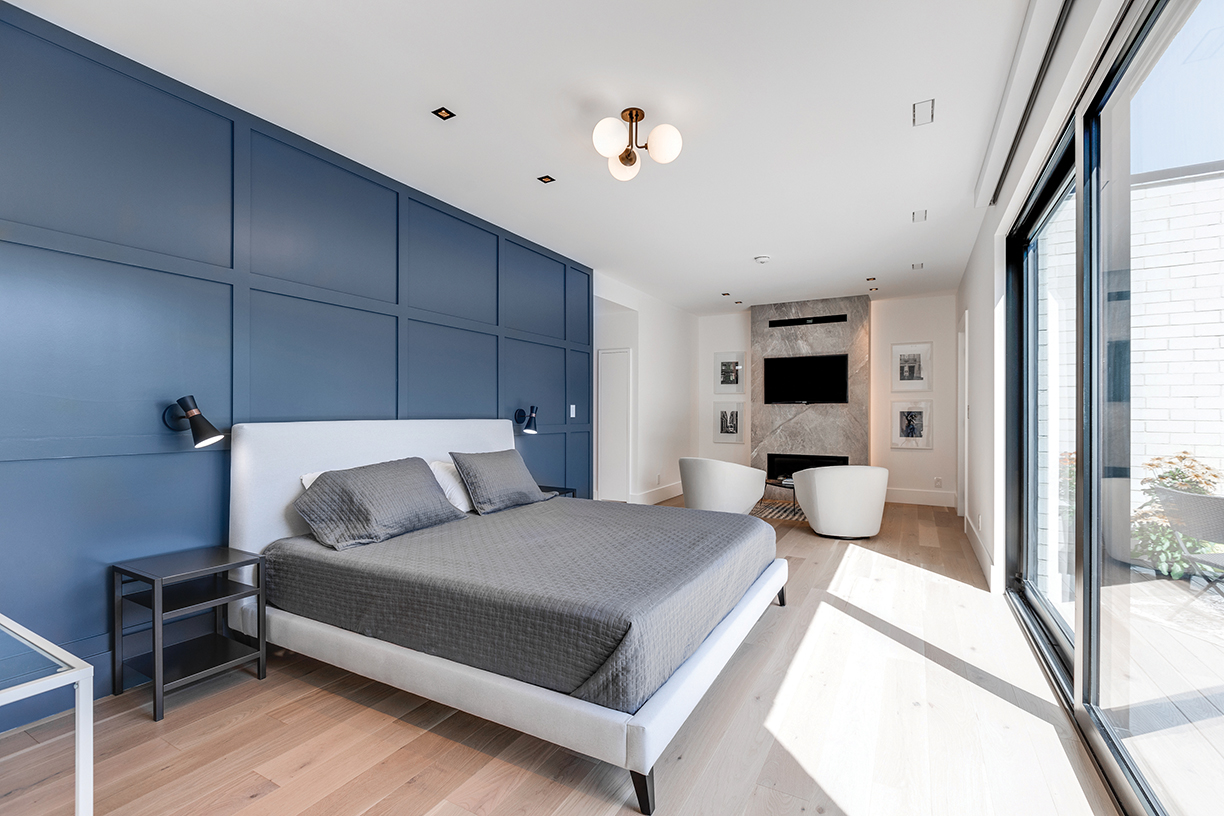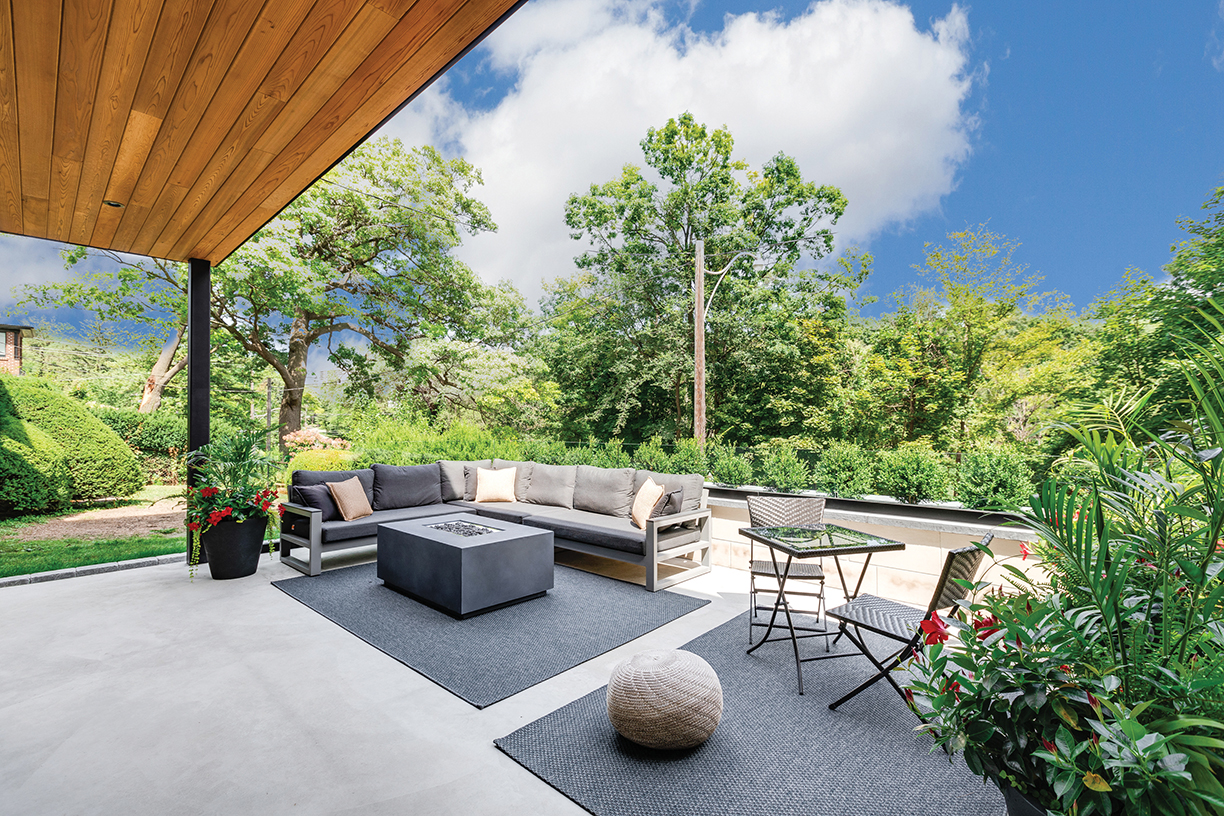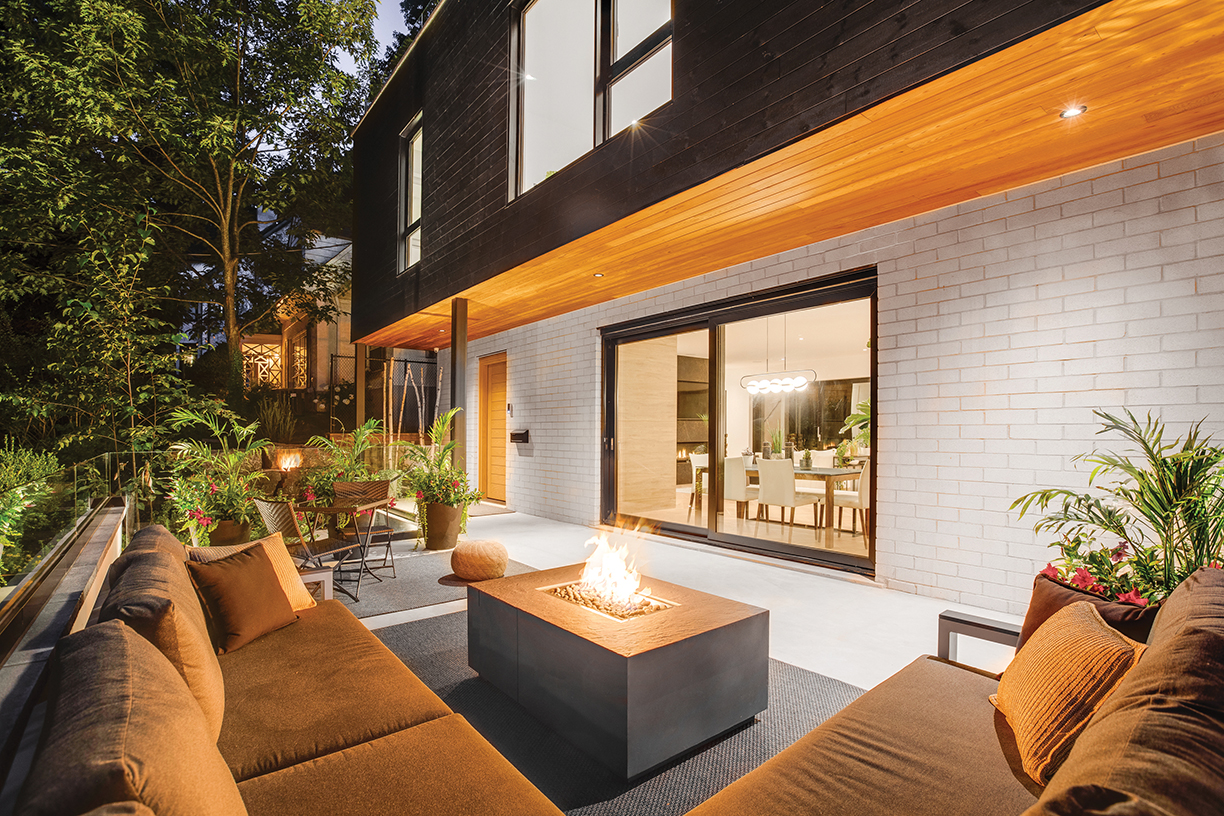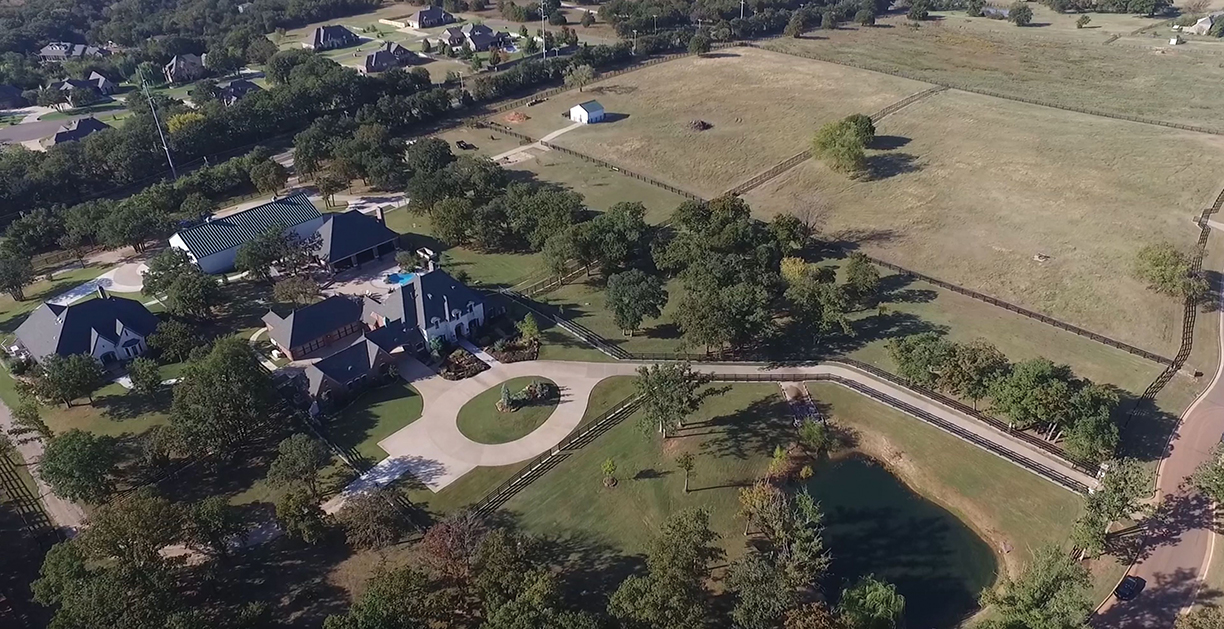
Edmond, Oklahoma
Majestic family estate on 18 acres in the gated equestrian addition of Qua Vadis in the Edmond city limits. The estate has 11,000 square feet of living and is minutes from downtown OKC. The 6,200-square-foot main home features 5 bedrooms, 5.5 baths, 2 living and dining rooms, office, gym or second office, safe room, and in-ground shelter. The 2nd 2,697-square-foot home is perfect to accommodate guests or multi-generational family living with 3 bedrooms, 2 baths, and a bank vault shelter and safe room. The 2,400-square-foot lodge style cabana overlooks the pool, courtyard and fire pit. A 5,000-square-foot barn with 16-foot doors and 4 horse stalls can accommodate an RV. Oak trees, riding trails, stocked pond, loafing shed, water wells, and generators. $3,600,000
For more about this property, visit www.11200sorentinodr.com
For more information, contact:
Debra Wilson — Broker Associate, GRI, CRS, ABR
Metro First Realty
405.919.6978
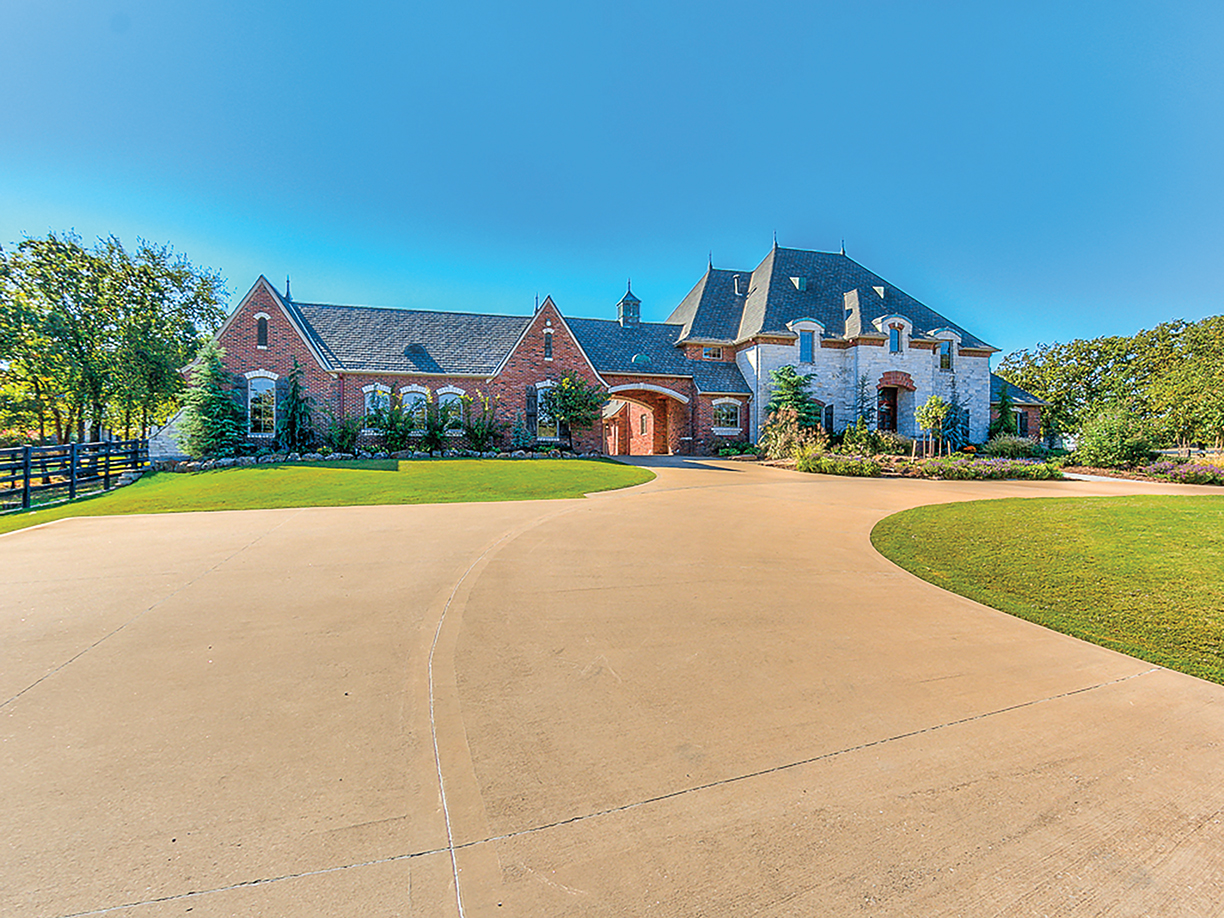
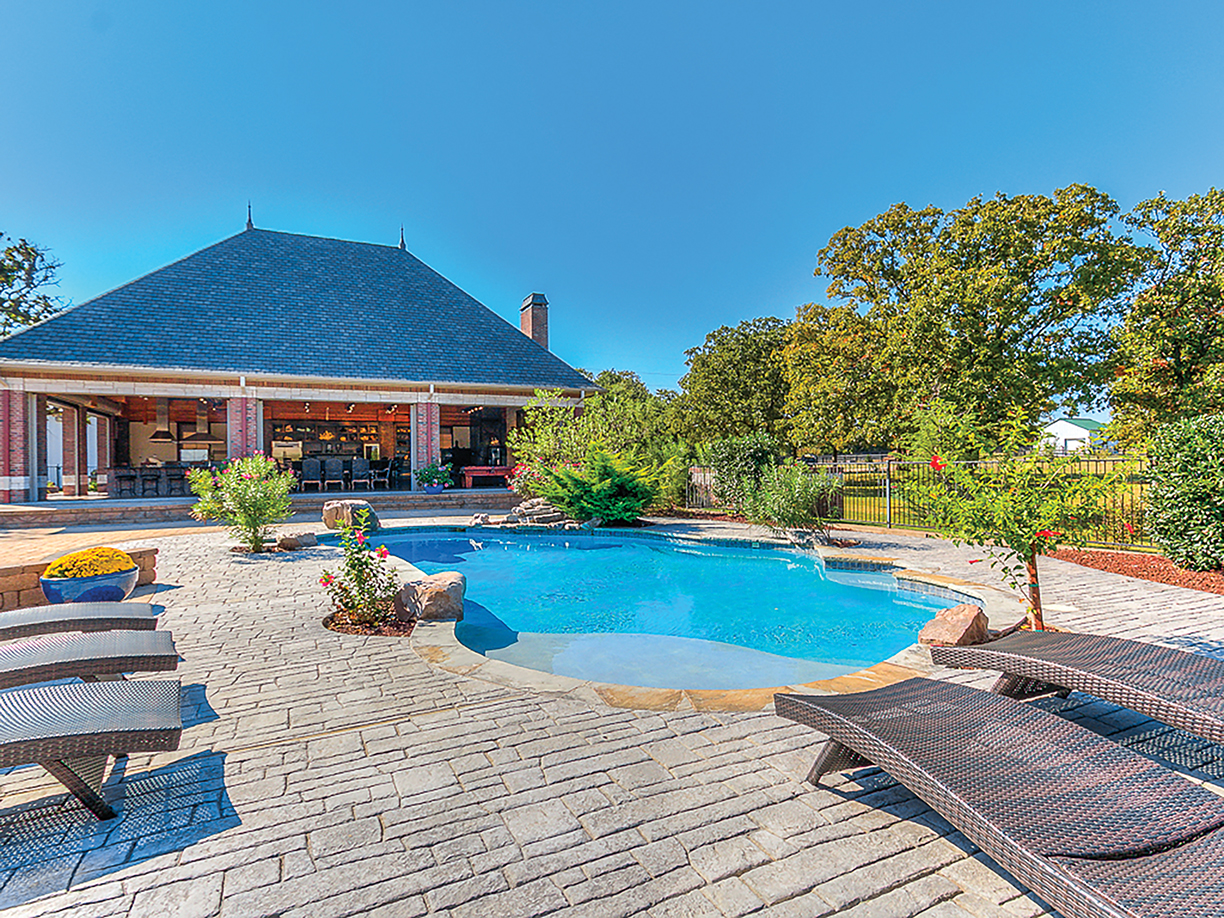

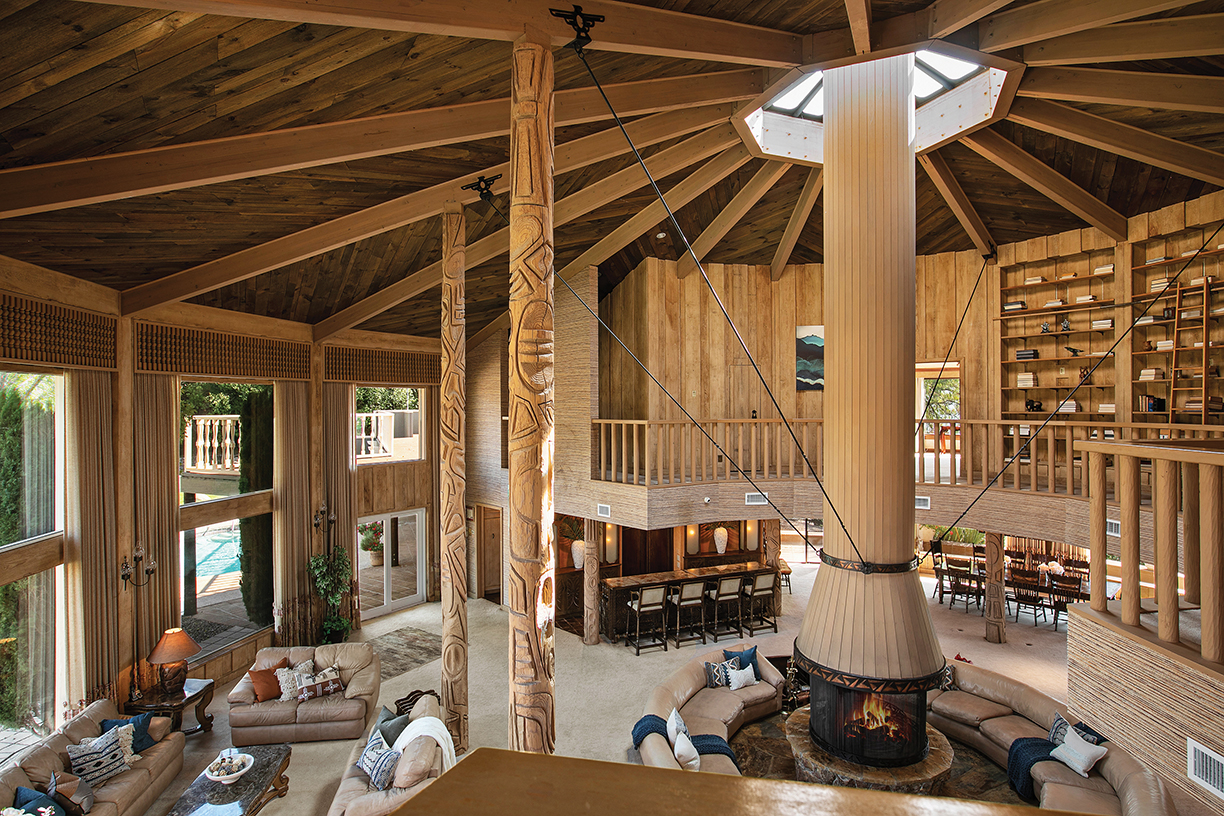
Once owned by McDonald’s founder Ray Kroc, this ranch features a pallette of stunningly beautiful pastures, valleys, hills and vistas, perfect for a family compound, company retreat, or working ranch. Comprised of 6 parcels totaling 554 acres, and multiple residences, barns, gathering spaces, and recreational opportunities.
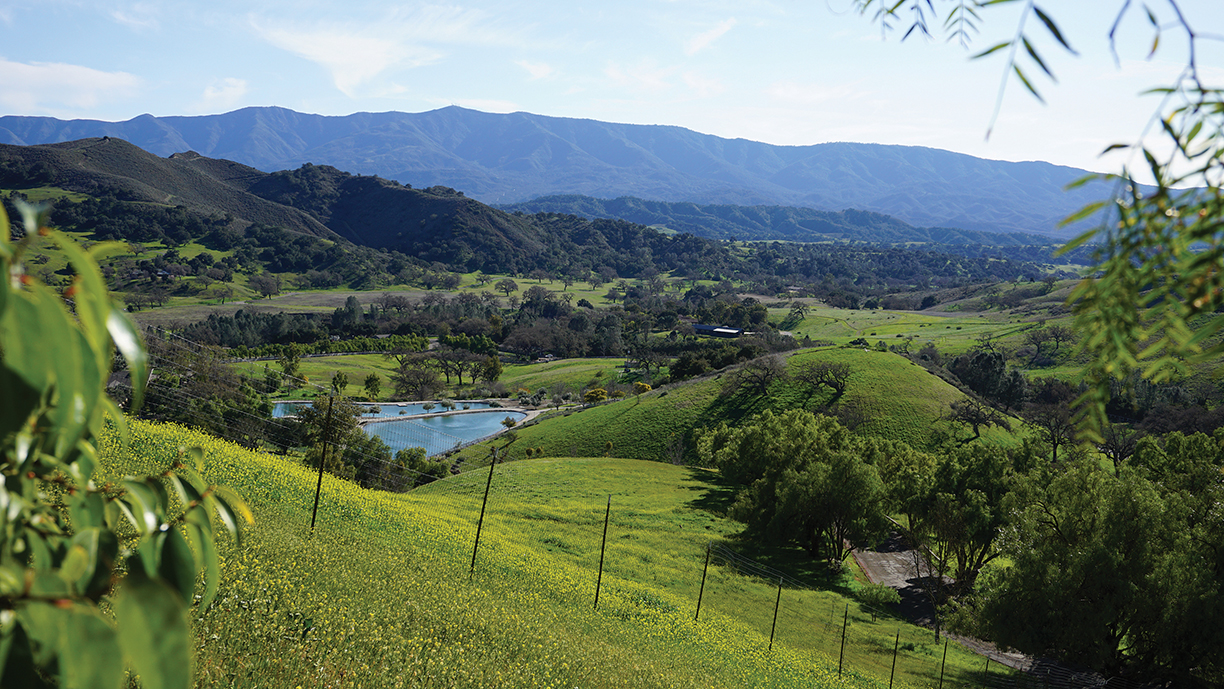
The property includes a 17,000-square-foot lodge with a 3,000-square-foot grand room, 14 bedroom suites, commercial kitchen, and dining room for approximately 100 people with overnight accommodations on the ranch for approximately 100 guests.
The Founder’s Building serves as a library, with 2 bedroom suites and ranch offices below. Other structures include a large storage barn, McDonald’s test kitchen, complete gymnasium, 4 single-family residences, 2 bunk houses with multiple en suite bedrooms, barns, paddocks and numerous fenced corrals.
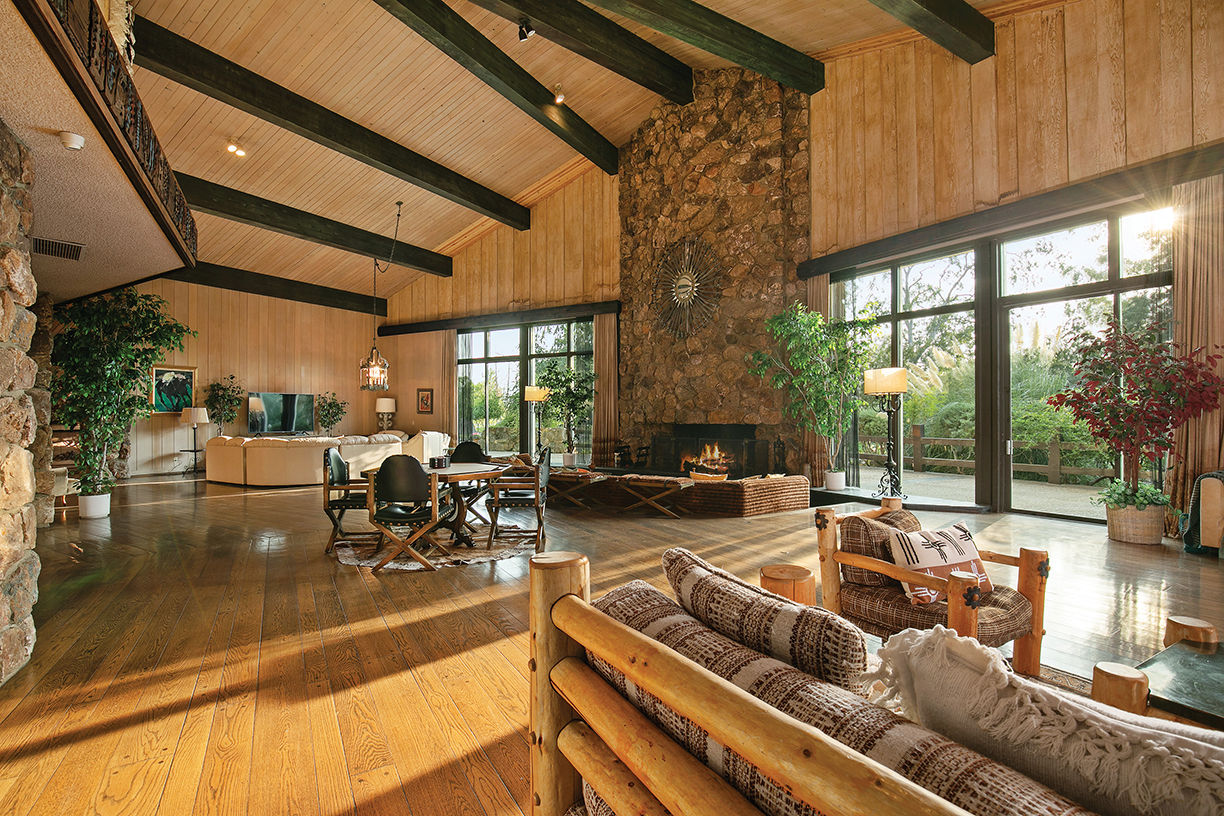
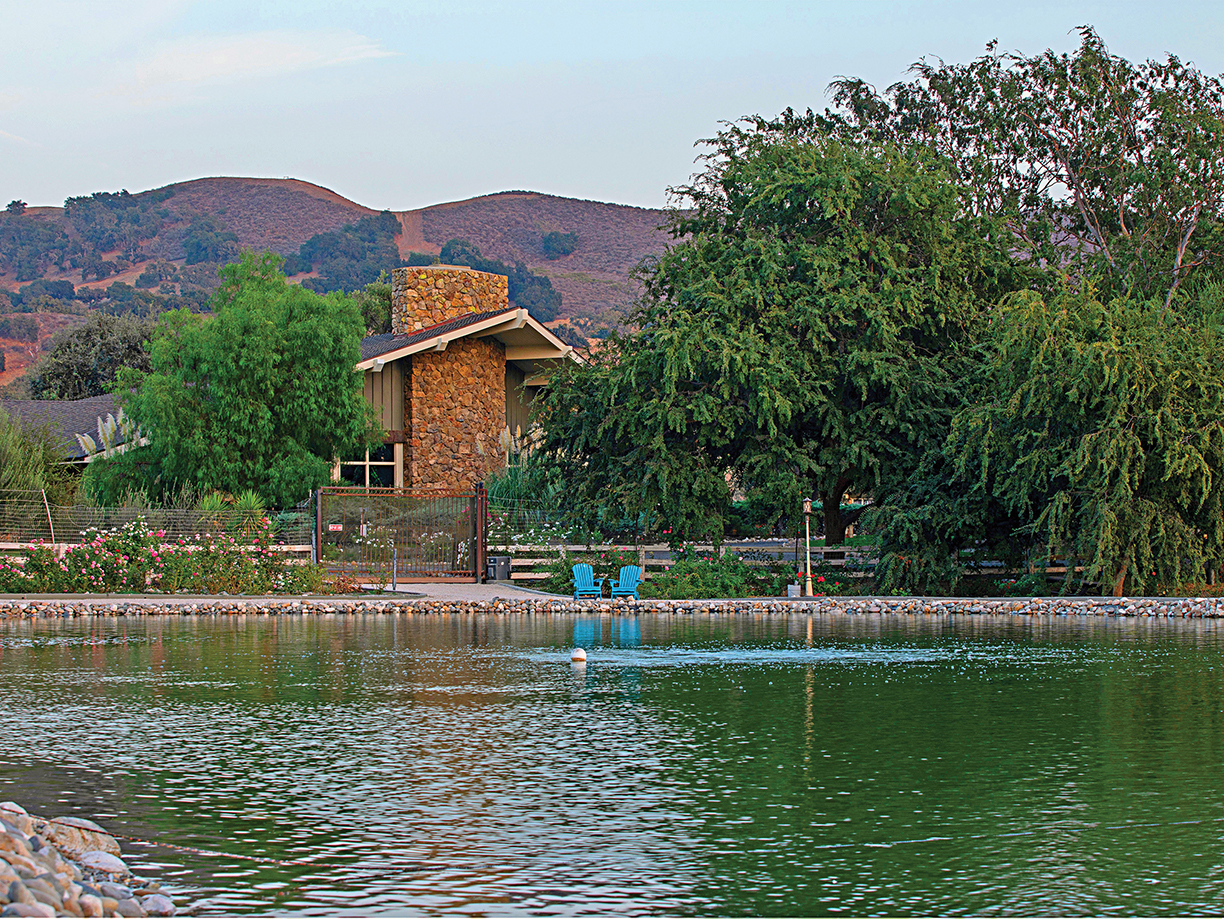
Priced at $29,000,000.
For more photos, information, and a property video click here.
For more information on this property, please be sure to contact:
Maurie McGuire, Scott Westlotorn & Maria Temmel of Coldwell Banker Realty.
Maurie@Montecitoland.com | Scott@MontecitoLand.com | Maria.Temmel@camoves.com
MM. 805.403.8816 | SW. 805.403.4313 | MT. 310.383.2337
CalDRE# 01875690 – # 01061042 – # 02023777
Photos courtesy of Maria Temmel.
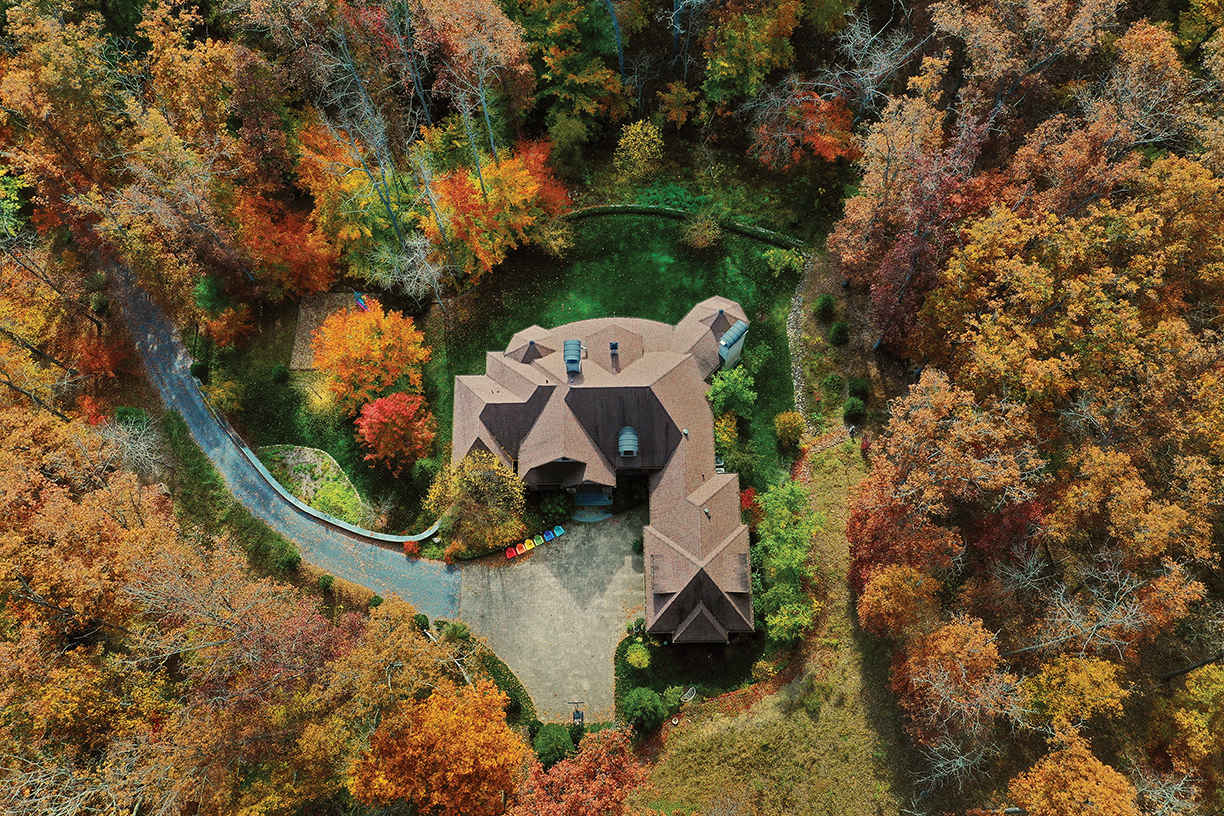
This exceptionally stylish and elegant home is in a private 6.8-acre wooded setting in Lewisburg, West Virginia, just minutes from downtown and the world-famous Greenbrier Resort.
“It has great quality and character, while maintaining the ease of a comfortable lifestyle,” says listing agent Paul Grist of Grist Real Estate Associates Inc. who is listing the property with Donna Stoner for $1.625 million
Its many noteworthy features include a living room with a 23-foot cathedral ceiling, four gas fireplaces, a large gourmet kitchen with an adjacent screened dining porch, five bedroom suites, a wine cellar, a dry sauna, and three-bay garage.
“The lower level family room features a stone fireplace and large windows, perfect for viewing the private wooded surrounding,” says Grist.
For more information, contact:
Grist Real Estate Associates, Inc.
Paul Grist, Broker — 304.661.6543
Donna Stoner, GRI, Agent — 304.646.6454
695 Jefferson Street, South Lewisburg, WV 24901
304.645.5000
www.GristRealEstate.com/LUX
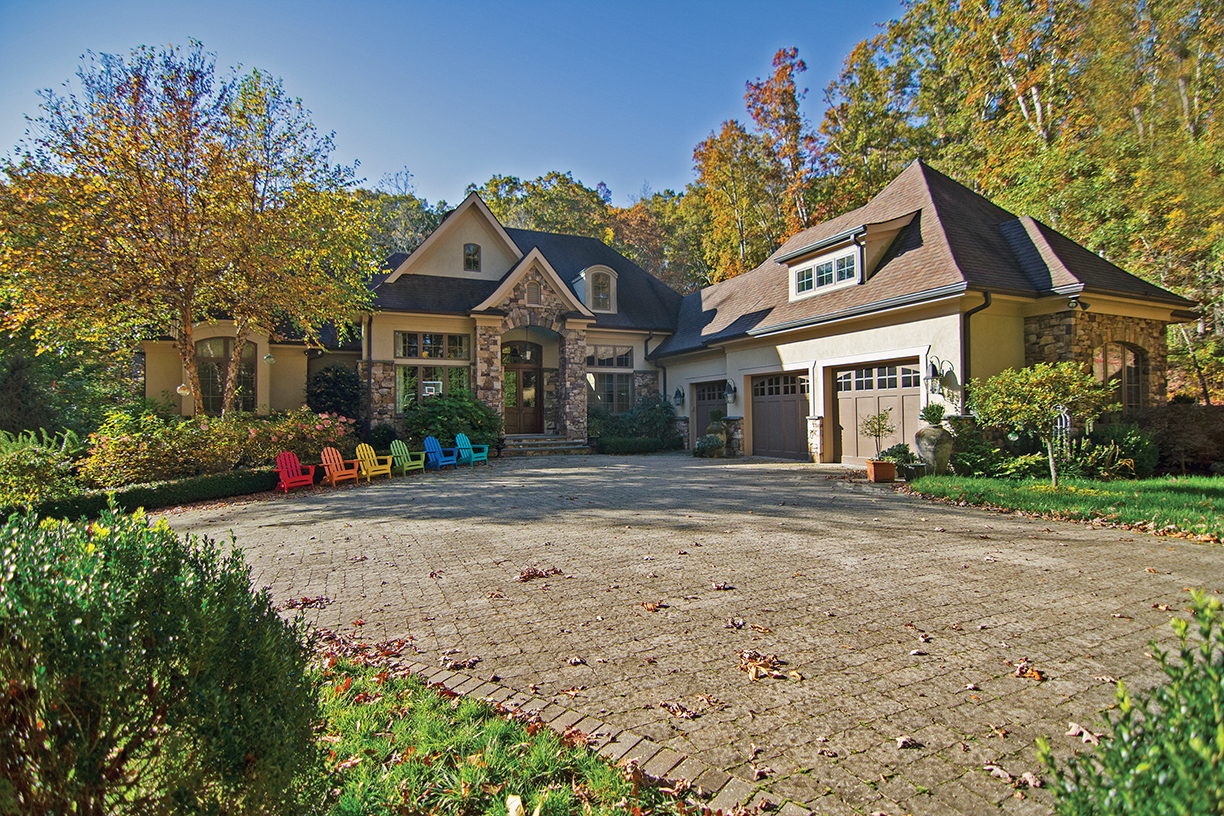
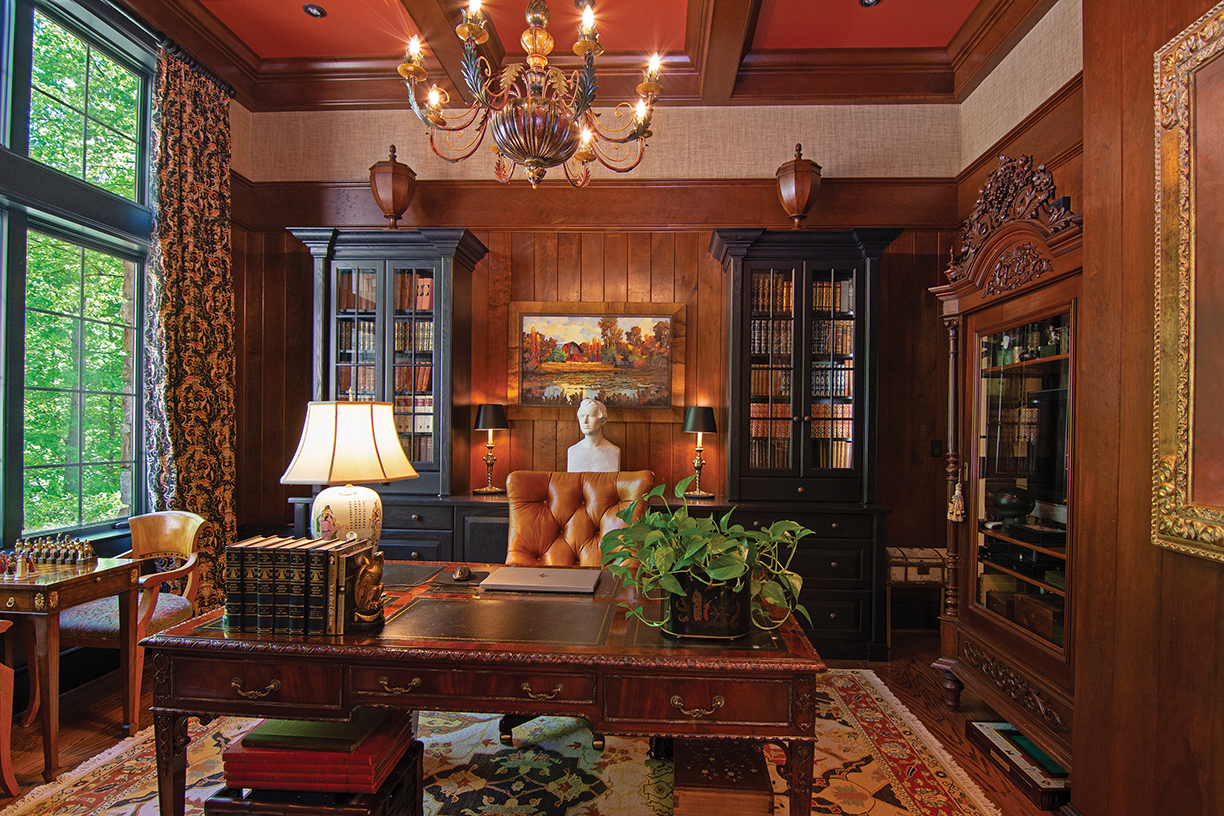
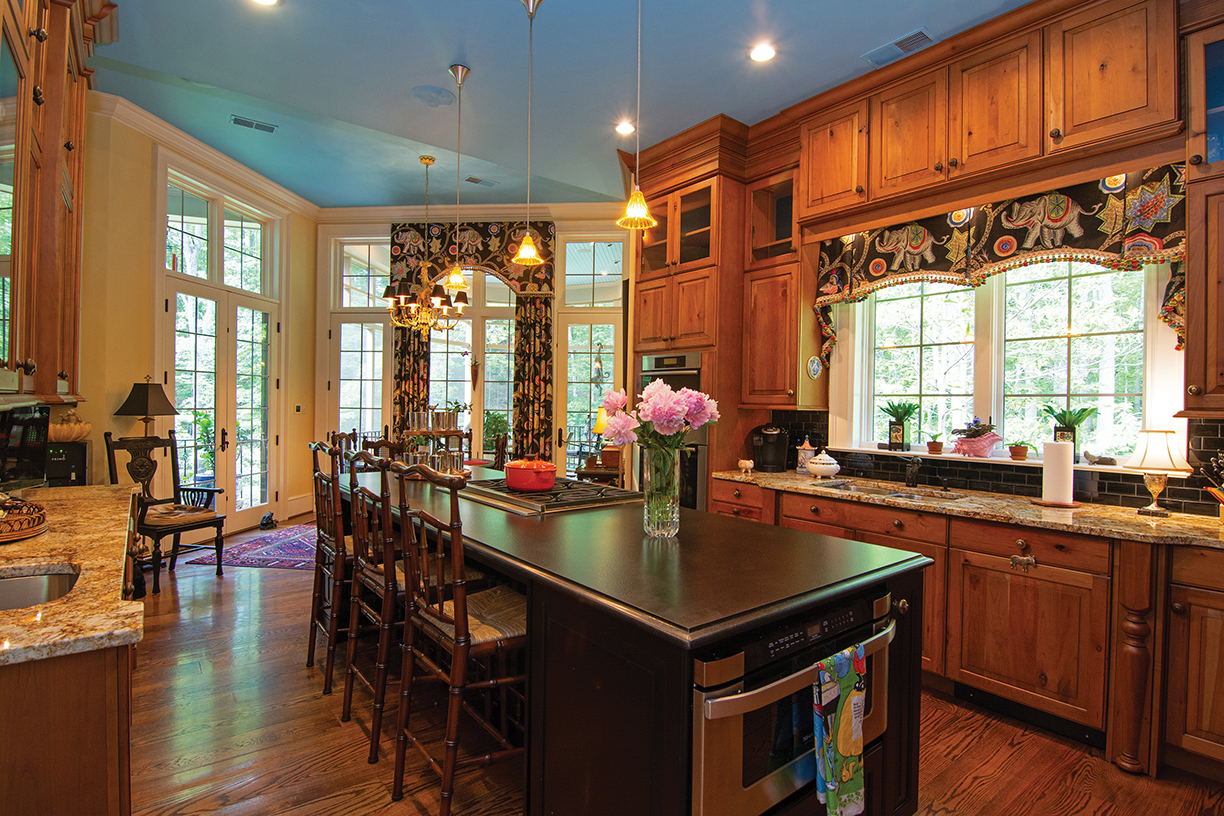
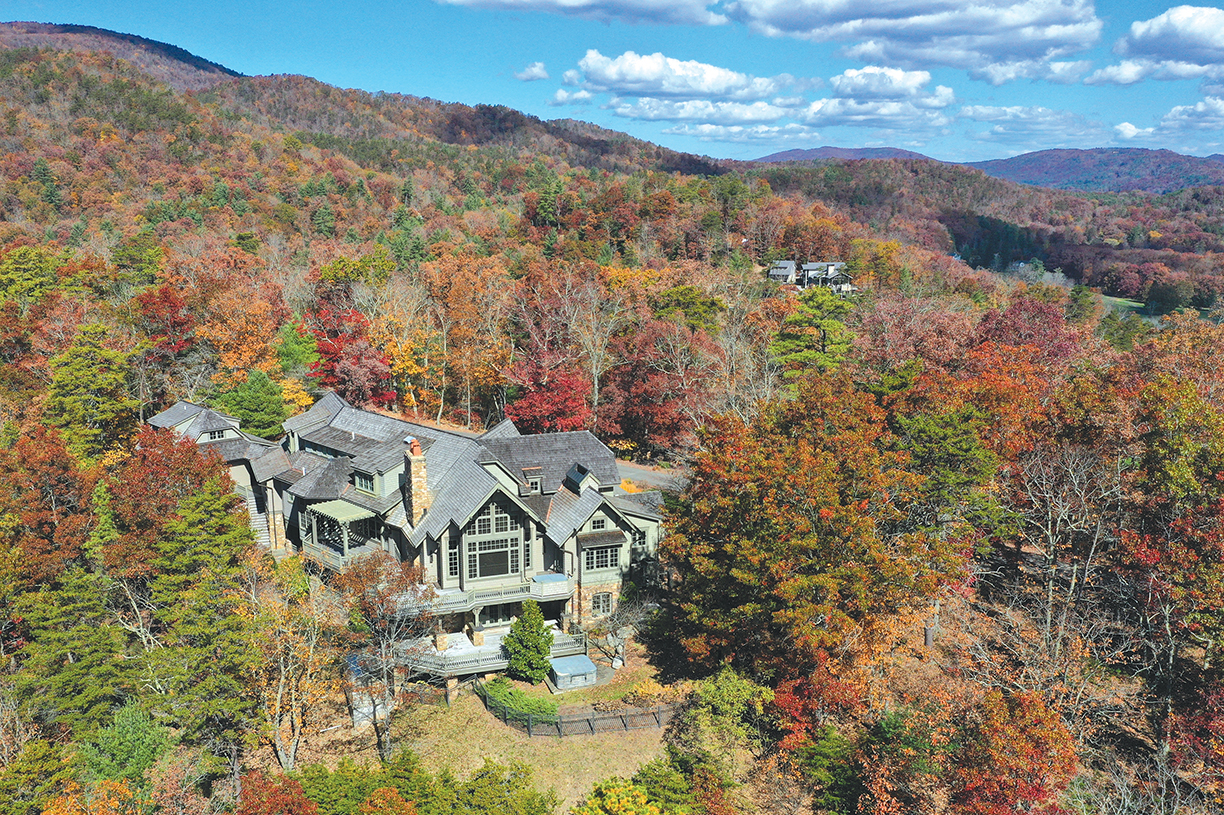
Showcasing a greenhouse, waterfall and koi pond, this approximately 22-acre mountain retreat in the Greenbrier Sporting Club at White Sulphur Springs, West Virginia, is perfect for someone who enjoys nature.
“The exterior waterfall in the front of the house makes it sound like a babbling brook in the middle of nature,” says listing agent Paul Grist of Grist Real Estate Associates Inc. who is listing the property with Donna Stoner.
The home features 10,028± square feet of living space, eight bedrooms, nine full and three half baths, four fireplaces, and two hot tubs.
“The living room, dining room, and kitchen, with serene views of the eastern mountains, gives one a feeling of ‘sitting on top of the world’ with total privacy,” says Grist.
The estate, which is listed for $2.95 million, also includes a carriage house.
Adjacent to the world-famous Greenbrier Resort, it is also conveniently located four hours from Washington D.C. and five hours from Pittsburgh, with the nearby airport offering direct flights.
For more information, contact:
Grist Real Estate Associates, Inc.
Paul Grist, Broker — 304.661.6543
Donna Stoner, GRI, Agent — 304.646.6454
695 Jefferson Street, South Lewisburg, WV 24901
304.645.5000
www.GristRealEstate.com/LUX
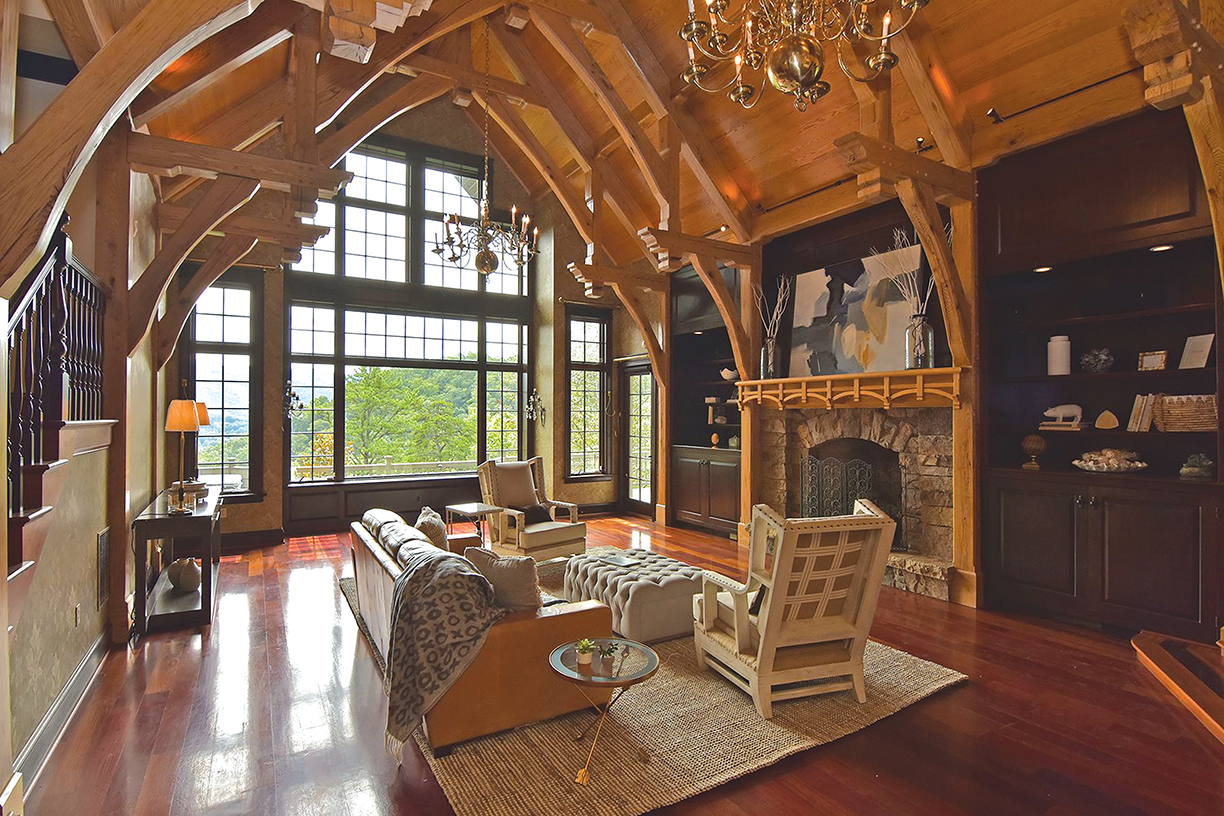
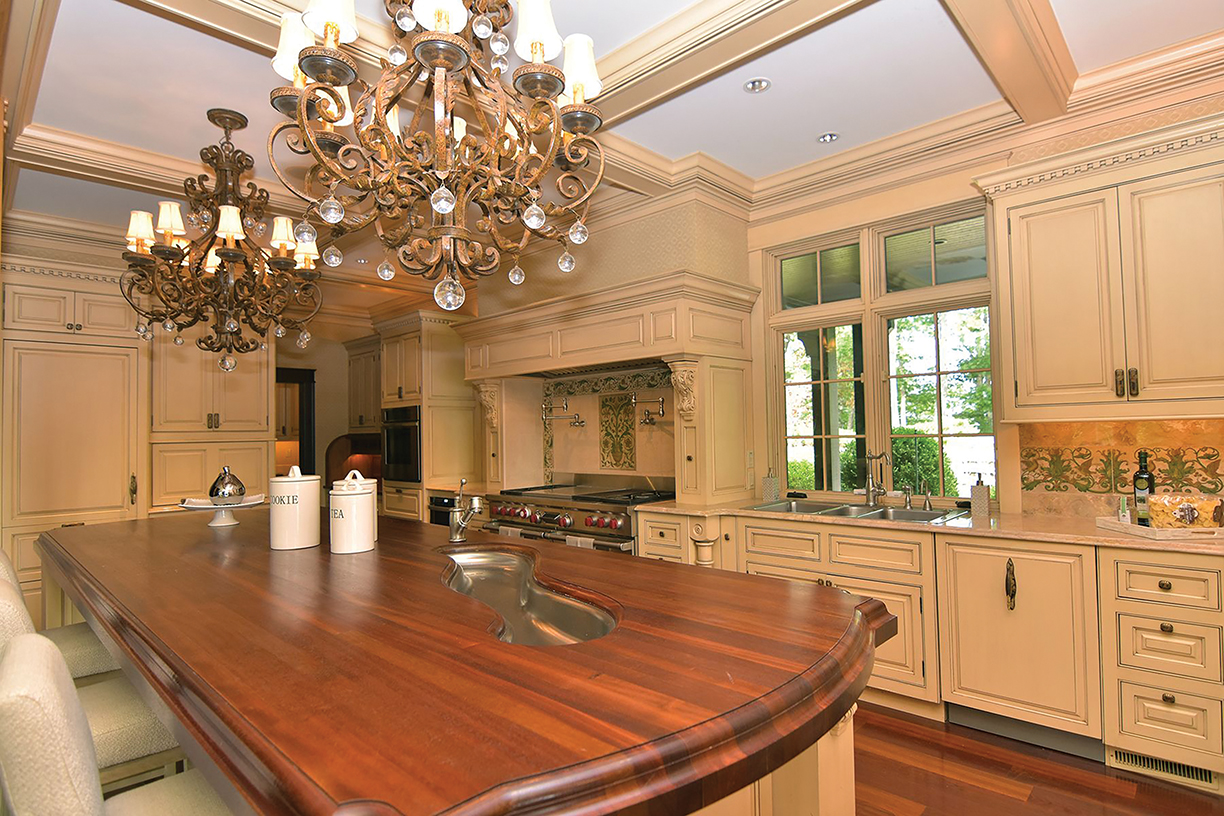
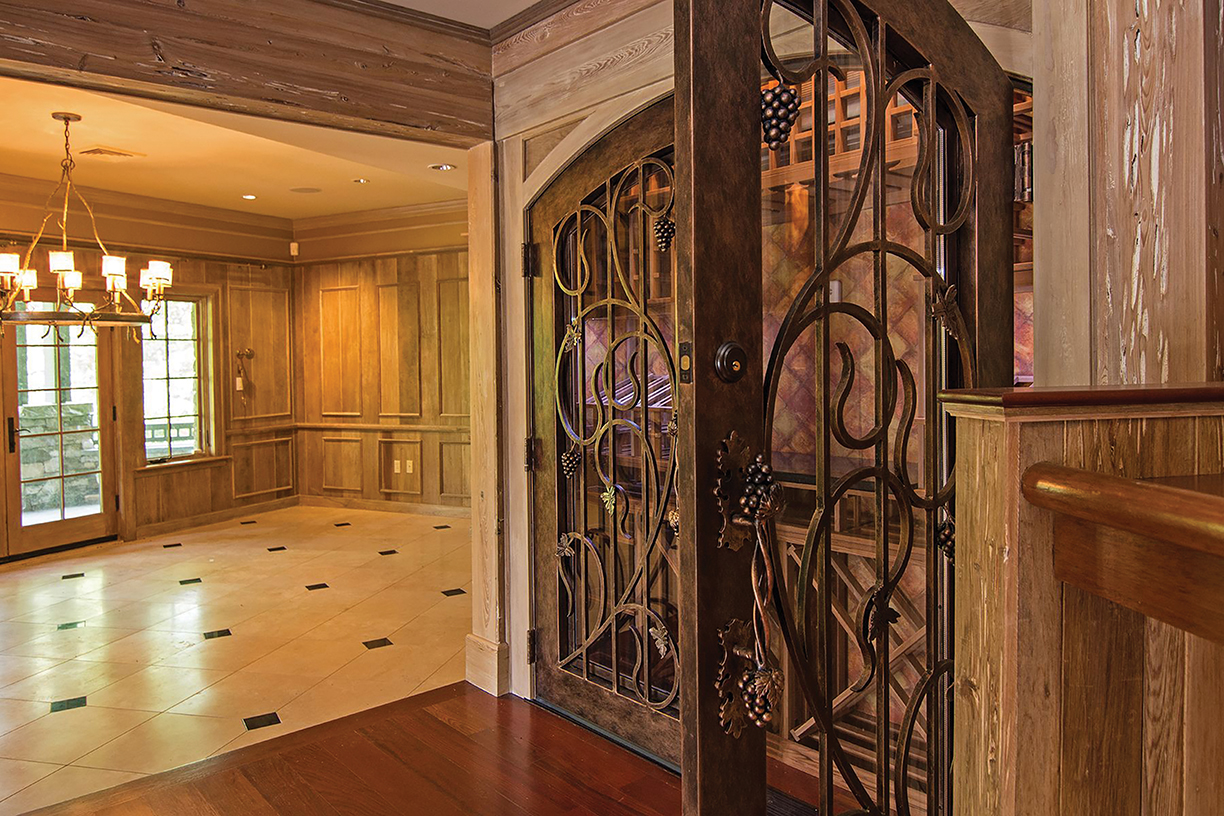
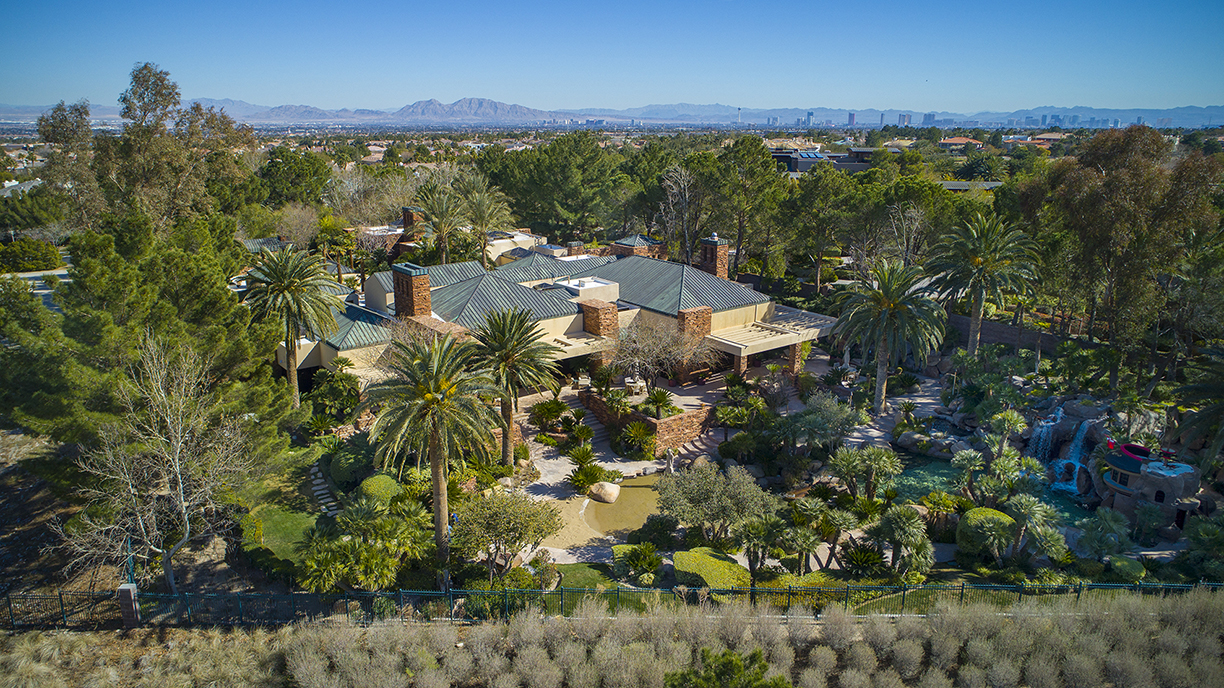
1701 Enclave Court
Las Vegas, Nevada 89134
Inspired by Frank Lloyd Wright’s Falling Water, this legacy property located in the prestigious Enclave of Summerlin is perfect for entertaining guests and family. Comprised of over 2,200 tons of ledge stone, this 13,000-plus-square-foot home sits on 2 acres of the private TPC course. This home’s amazing gardens and waterfalls run throughout the property, and not only serve as the centerpiece of this palatial home but provide a constant reminder of the true uniqueness of this home in the desert. Impressive vaulted-box, exposed-beam ceilings with recessed lighting adorn much of the home. For entertaining guests and family, this home boasts a great room, family room, formal dining room, wet bar, and wine cellar/home theater. This Las Vegas home offers both character and significance unmatched in the valley.
For more information, contact:
Don Kuhl
Principal – KUHL Group
Synergy | Sotheby’s International Realty
C: 702.324.2121 O: 702.360.1414
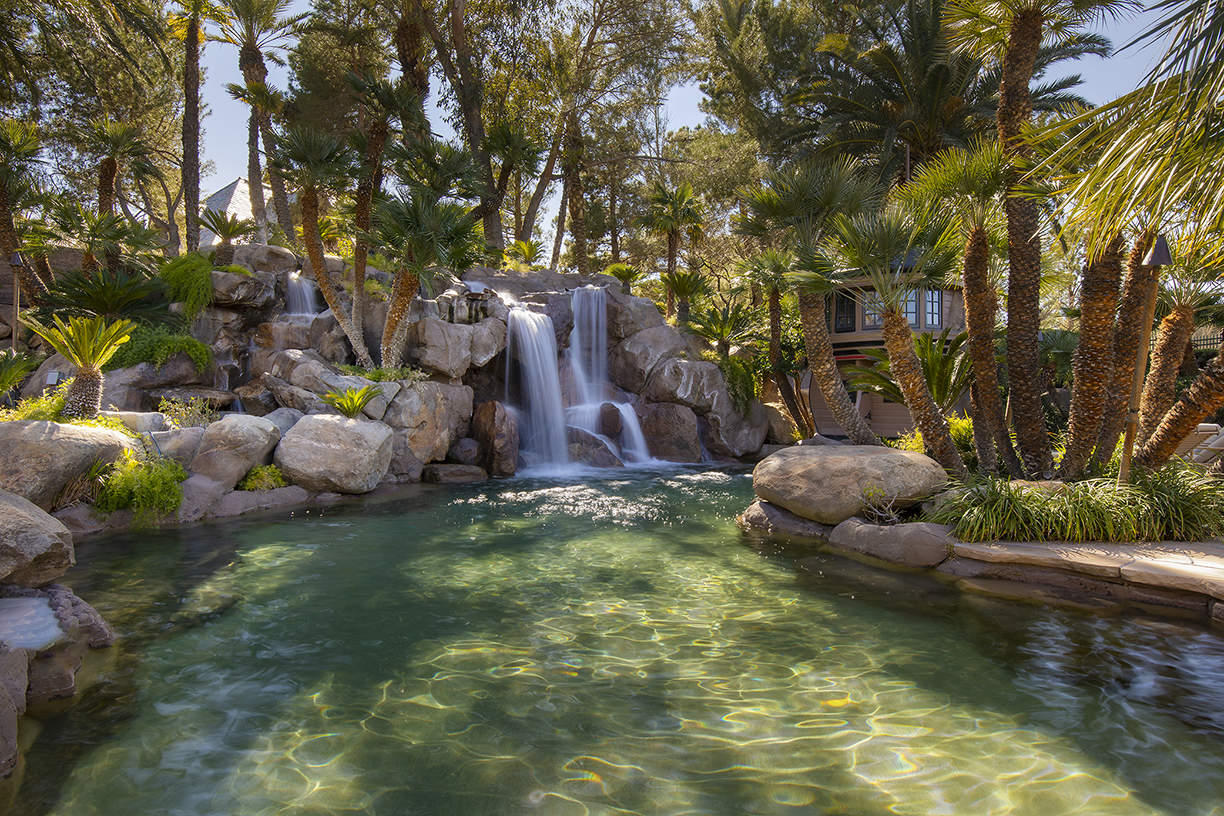
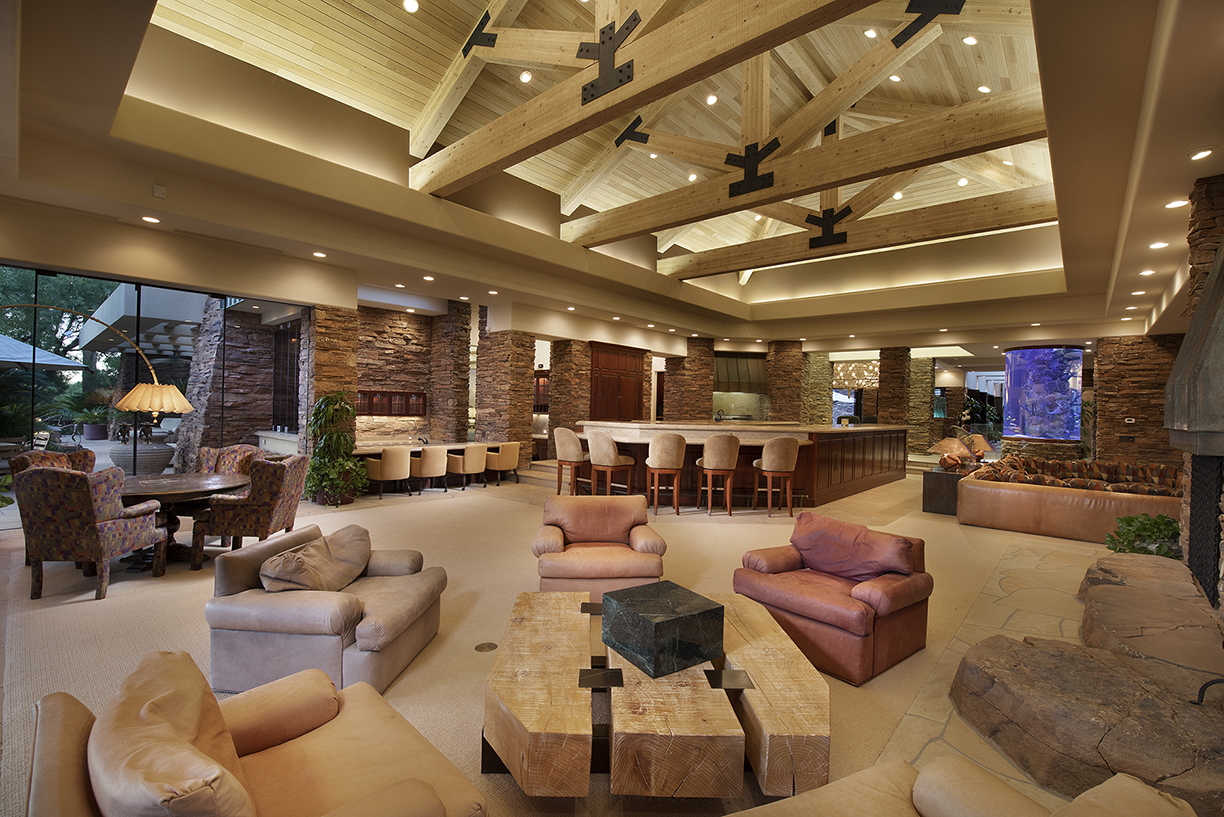
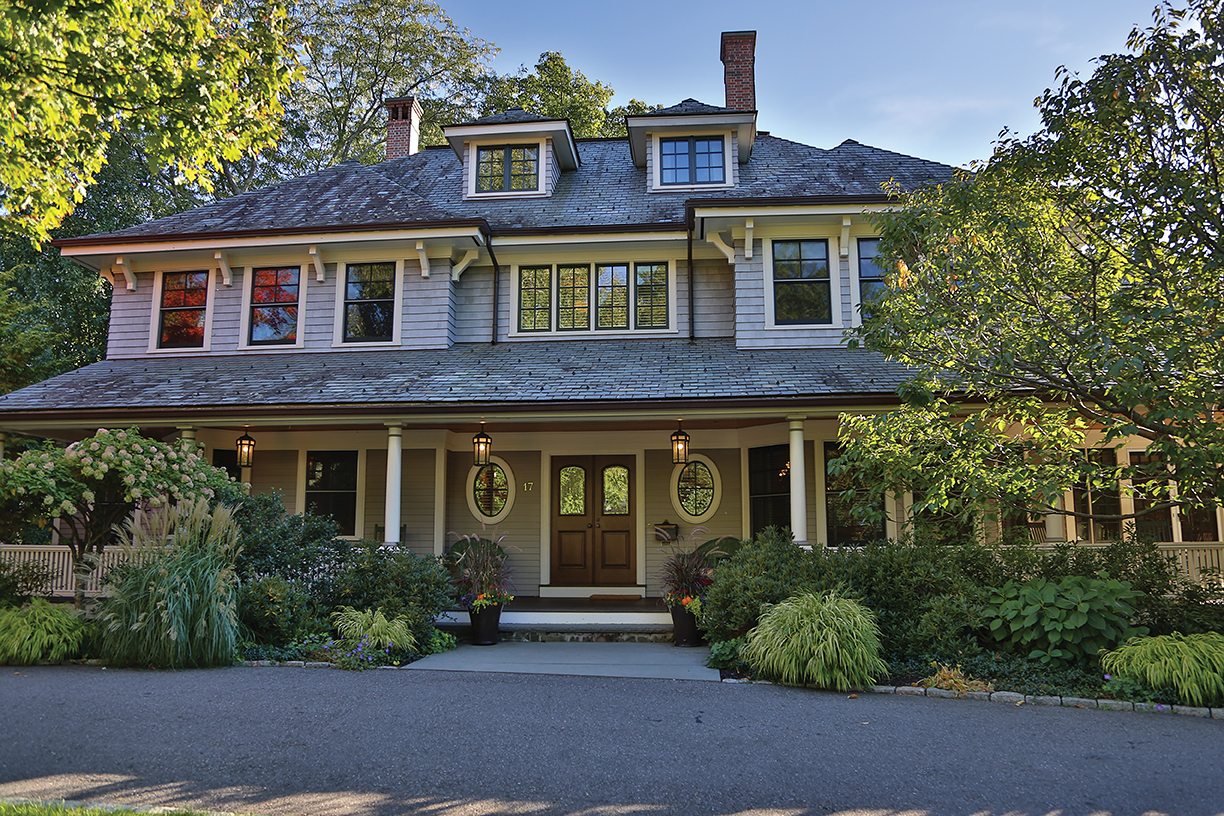
Craftsmanship and design combine with state-of-the-art construction in this four-story home — built by Silva Brothers Construction and designed by Bechtel, Frank, Erickson architects — in one of Lexington, Massachusetts’ finest neighborhoods, Merriam Hill.
“It has an aura of grandness, impeccable taste, and a quality rare in newer homes,” says listing agent Lester Savage of Berkshire Hathaway HomeServices Commonwealth Real Estate, who is listing the property for $3.75 million. “In particular, the kitchen and family room have extraordinary warmth and intimacy, with a heart-of-the-home design.”
The lower level rooms include a play stage, wine grotto, media room and playroom.
“The home emits comfort with a south-facing eating area overlooking a tranquil, spacious yard and bluestone patio area,” says Savage.
The estate has easy access to Lexington Center, town conservation areas, and the Minuteman Bikeway.
Photo courtesy of Krissy Preble.
Candice Rich, a top-producing Realtor, an accomplished business professional, and a skilled negotiator. Her dedication to helping her clients successfully achieve all their real estate needs is proven in her results.
Organically building her business from 100 percent referrals to multi-million-dollar levels, she has developed long-lasting relationships, becoming a valued go-to real estate advisor. Her outstanding reputation has garnered her to represent many top executives, athletes, and successful families.
Prior to entering real estate, Candice was a former 20-year private practice accountant, bringing further added value to her clients.
Whether you are interested in selling your lakefront property, a luxury downtown brownstone, or a home in an exclusive suburb, she is ready to create a custom marketing plan to get your home sold at top dollar.
For an inside look into an exclusive real estate opportunity from Candice, click here.


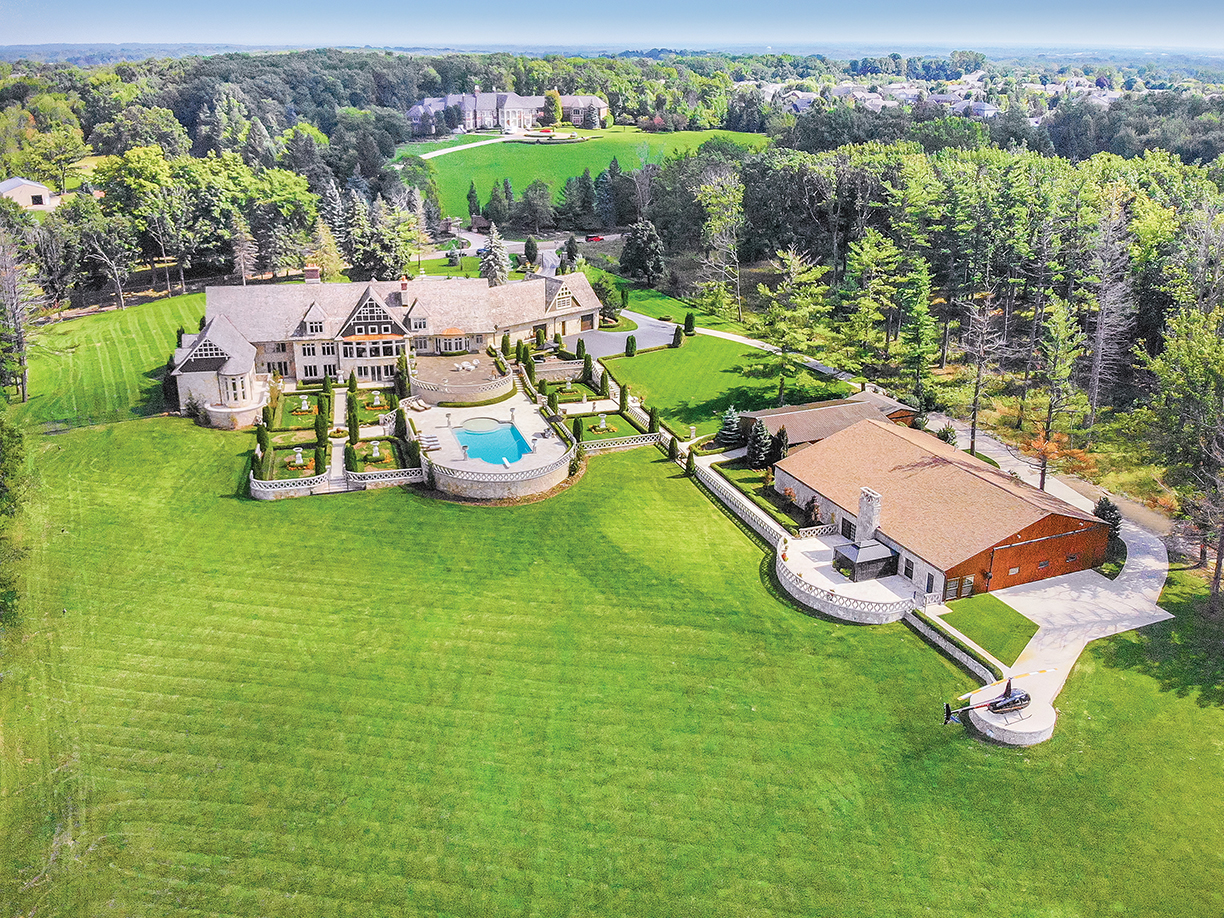
Set on 12 acres of privately gated, impeccably landscaped property, this French Manor estate in Oakland Township Michigan offers 13,000-plus square feet of meticulously appointed living space.
The home boasts soaring ceilings, maple-planked flooring, supreme stonework/woodwork and four fireplaces. Additionally, there is a top-of-the-line chef’s kitchen with a separate pizza oven, six bedroom suites, seven full baths, a private loft area, and a finished walkout with a lap pool and gaming area.
Terraced outdoor patios, exquisite formal gardens, 21-flaming urns, a swimming pool, a helipad, a state-of-the-art hanger, a 6-car garage and a horse barn round out the property. “This private estate is for the athlete, the entertainer or a top executive looking for the ultimate in exclusivity and privacy,” says listing agent Candice Rich of KW Domain Luxury Homes International, who is listing the property for $5.199 million. “This home has it all!”
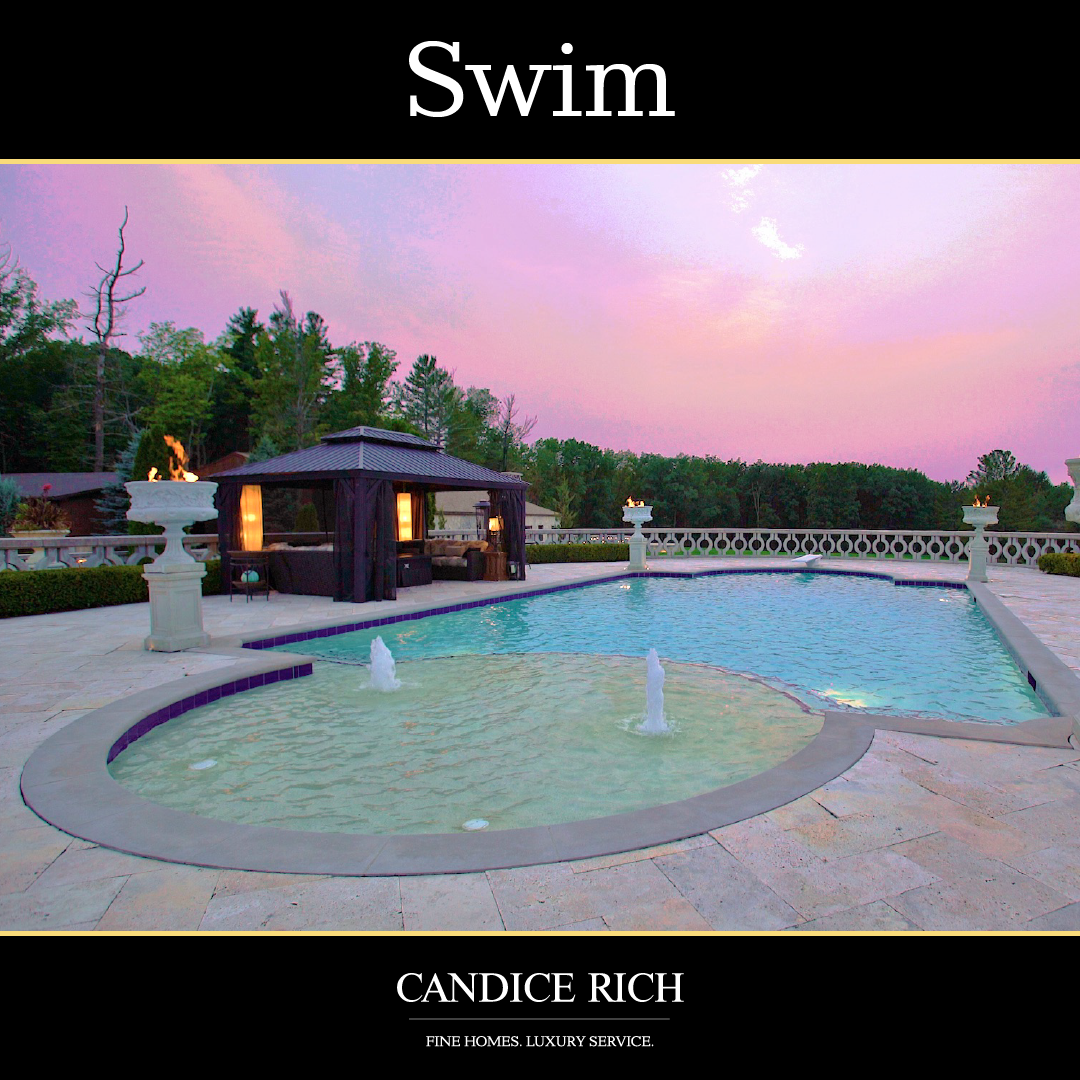

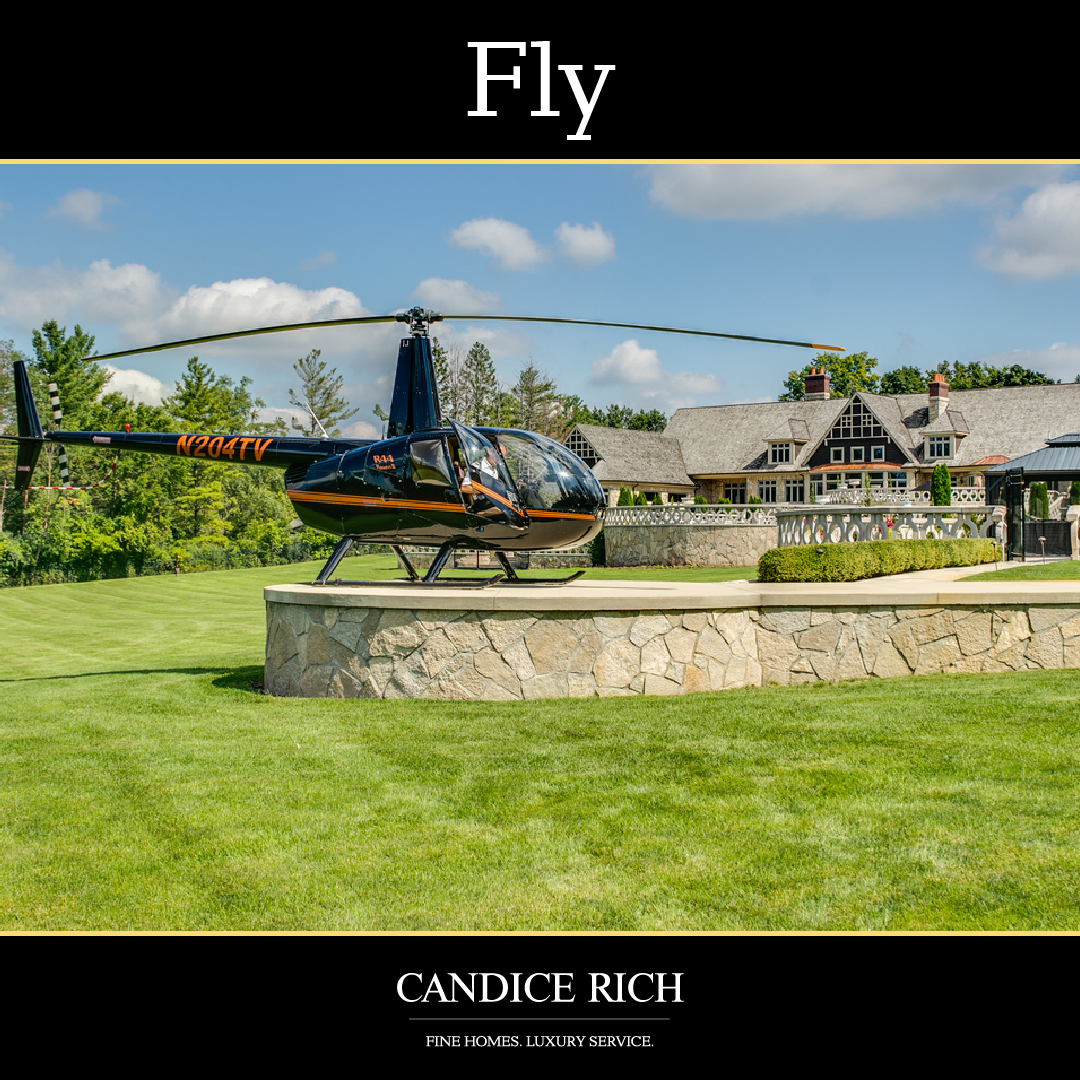
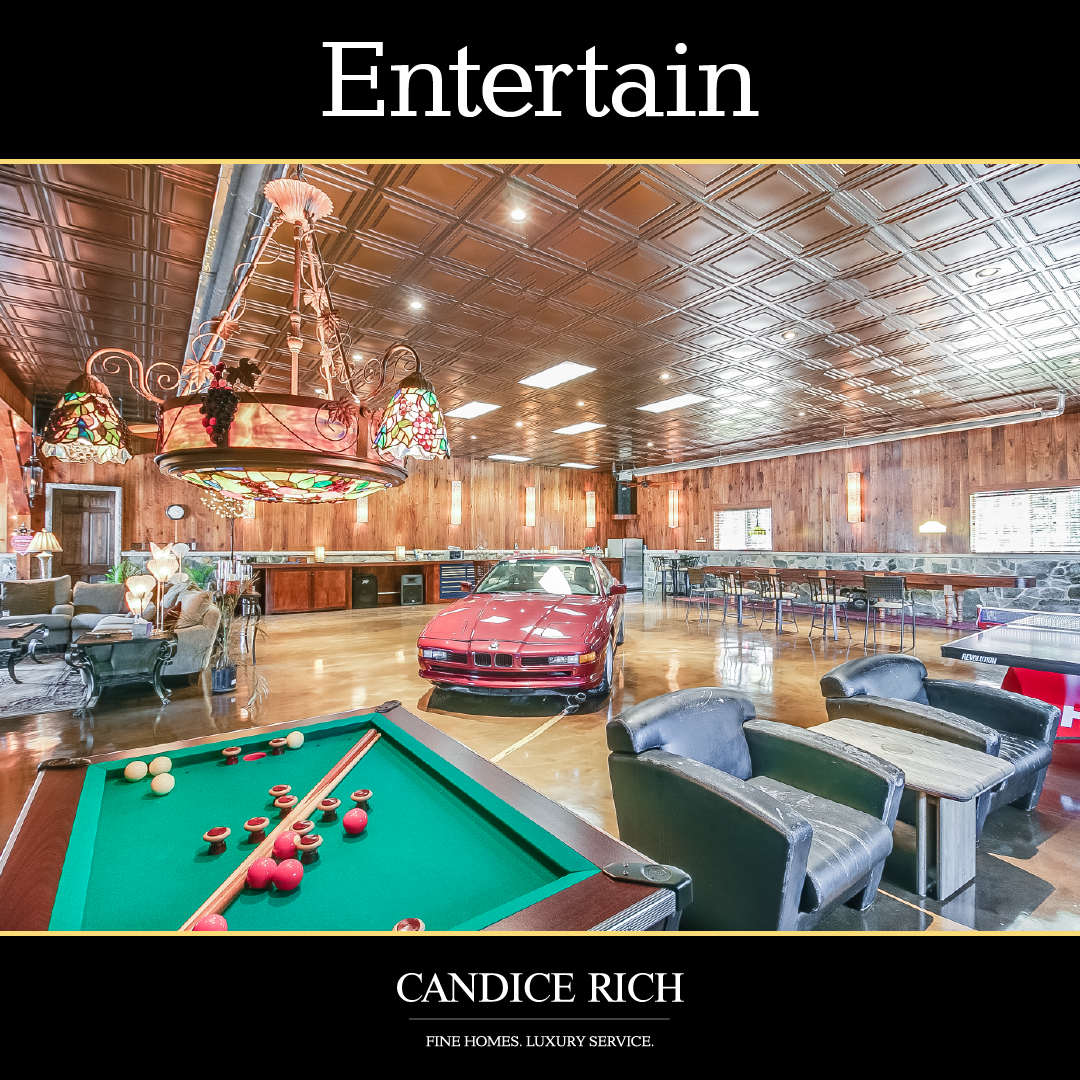
To learn more about this property’s agent, Candice Rich, click here.
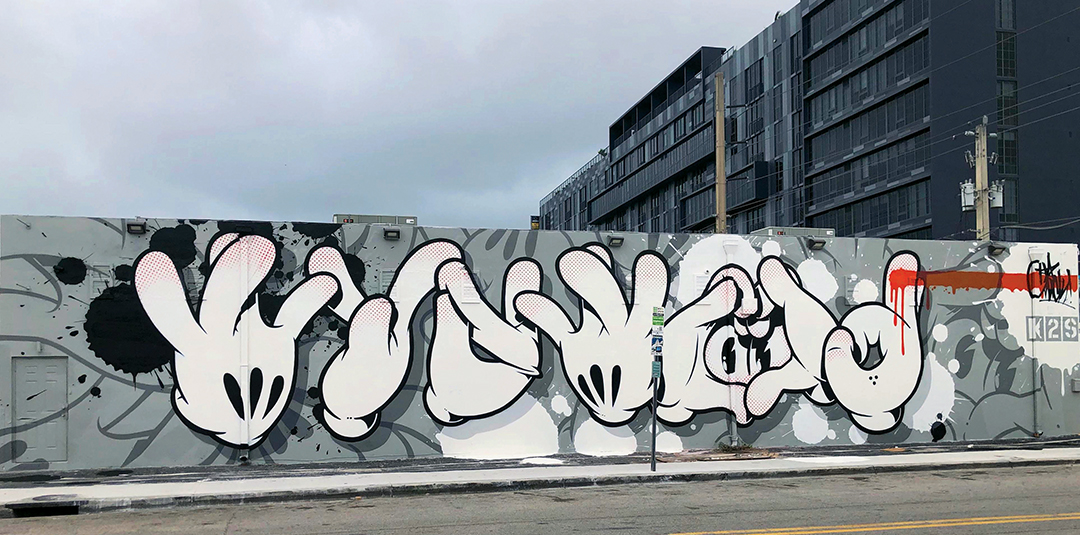
Slick, a native of Hawaii, painted this mural on the exterior of the Museum of Graffiti in Miami.
Photo courtesy Museum of Grafitti.
Its earliest practitioners were considered criminals, but now the work of some graffiti artists hangs in the nation’s most prestigious museums.
After society’s initial outrage over acts of vandalism in the name of creativity, art enthusiasts begrudgingly acknowledged that some wayward, urban painters were genuinely gifted. Over time, graffiti and street art earned a place in prestigious collections, private galleries and museums like the Museum of
Contemporary Art (MOCA) in Los Angeles and Whitney Museum of American Art in New York.
While graffiti is often viewed as an American-born genre, Michael Rooks, a curator of modern and contemporary art at Atlanta’s High Museum of Art, provides some historical context. “Graffiti and street art have their origins in the history of 20th century art — from Dada wherein text replaced image to inveigh against WWI on the streets of Zürich, to the Mexican muralist movement’s large-scale murals in post-revolution Mexico City, to Les Affichistes artists whose affiches lacérées (layers of torn posters and advertisements) were literally sourced from the streets and walls of post-WWII Paris.”
The evolution of American street art has been well documented in L.A. and New York, but the acceptance of this form of artistic expression has also occurred in Philadelphia, Miami, Chicago, and San Francisco.
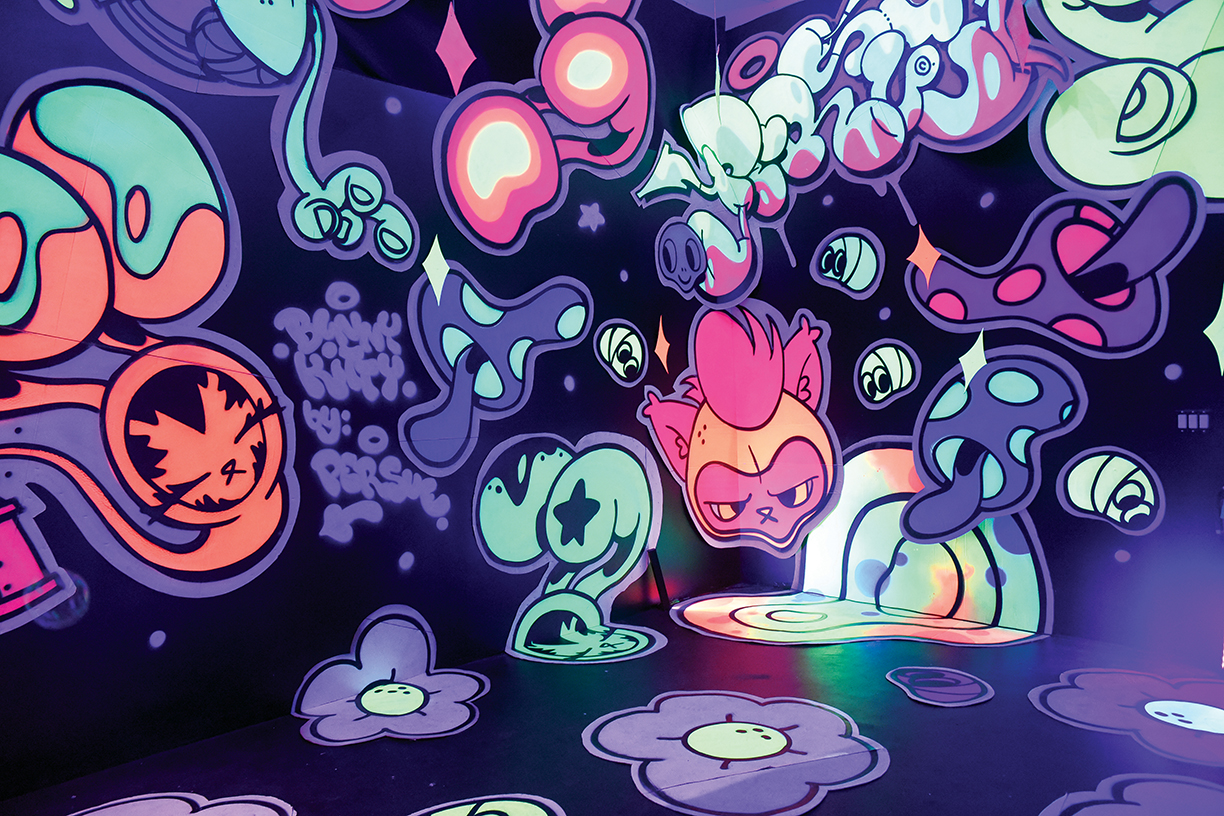
“Bunny Kitty’s Dreamstate Room” is a vibrant, playful work from artist Persue.
Photo courtesy Museum of Graffiti.
Some street artists are commissioned as muralists, a transition that monetizes and legitimizes their work, before eventually being discovered by curators. Ultimately, gallery representation leads to their art appearing in chic restaurants, hotels and private collections. Artists like Keith Haring, Jean-Michel Basquiat and Shepard Fairey — all once confined to the fringes of the art world — became creative celebrities. In L.A., the exclusive fashion boutique of Elyse Walker features artwork by RETNA, one of the most prominent local street artists, while superchef David Chang hangs the work of David Choe in Majordomo, his popular downtown restaurant. The city’s Mayfair Hotel features the work of a different street artist on every floor — resulting in diverse visual experiences for guests — and is a tribute to the depth of talent in the region.
The historic Mayfair, site of the first post-Academy Awards party in 1929, has been transformed into a trendy setting showcasing street art, curated by artist-in-residence Kelly “RISK” Graval. The Louisiana-born artist became one of L.A.’s most influential graffiti stylists and was among the pioneering artists to transition from the street to the gallery, as well as entering the worlds of fashion design and music video.
RISK’s own work is represented by a Buddha-inspired installation on the second floor and one of his murals will eventually soar above the 15th-floor pool deck. “I selected my “Metallic Tissue” series, which consists of a body of work that I paint on panels built out of repurposed spray cans,” reports RISK, who states, “They’re my imprint on society as an artist, my DNA.” He also installed some of his unique neon work in the lobby, which suits the vintage of the building. Overall, nearly 100 pieces throughout the hotel represent the diversity of L.A.-based graffiti artists and muralists like DEFER, Billy Morrison and Shepard Fairey, whose breakout work was the Barack Obama “Hope” imagery from the 2008 presidential campaign.
“There was a time when graffiti artists were a small underground subculture,” explains RISK, but adds, “The powerfully dynamic art sparked a younger generation and it exploded.” He acknowledges that street art festivals and museum exhibits helped elevate the genre within the polite corridors of the art world, but that true recognition has been stubborn.

Neon work from RISK, the artist-in-residence at The Mayfair Hotel in L.A. Photo courtesy the Mayfair Hotel.
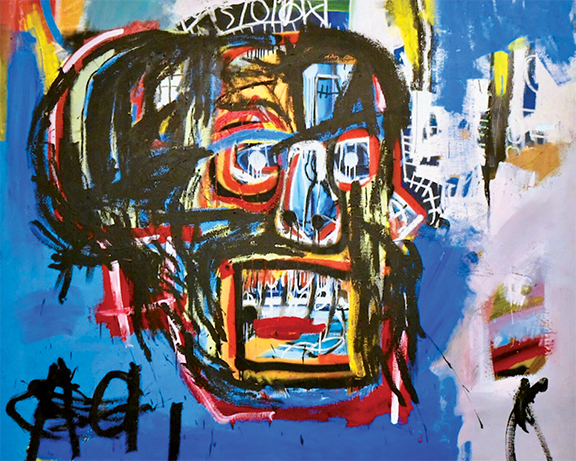
This untitled painting of artist Jean-Michel Basquiat sold for $110.5 million at auction. Photo courtesy Museum of Graffiti.
“It was time for a new generation to take over. The old guard and practices of art began to change,” insists RISK, who suggests progressive hoteliers are helping idiosyncratic artists to find an audience. “Hotel art was becoming stale, kind of like Muzak in elevators in the ’80s, and needed a new approach,” says the veteran artist. “Boutique hotels like The Mayfair are ahead of the curve and breathe fresh air into an exciting future for art, artists, and art enthusiasts,” says RISK.
Roger Gastman, an urban anthropologist and historian, is a leading authority on street art who counts The History of American Graffiti and Street World: Urban Art and Culture from Five Continents among his 50 books. Gastman remembers his own discovery of self-expression — through a spray paint can in the early 1990s — as a defining moment in his young life.
Gastman, whose first book, Free Agents: A History of Washington, D.C. Graffiti, documented the local culture he experienced in his youth, reports there is a distinction between graffiti and street art. “Graffiti is very name-based, very ego-driven, while street art is more image-based and involves additional tools and techniques,” says Gastman, but notes that both have their roots in vandalism. “Street art is a safer name and is more digestible to the public, but graffiti and street art are kissing cousins on the same playing field,” he muses.
“So much of this work is fantastic and deserves to be seen in a different light, collected and respected,” says Gastman, who laments, “A majority of galleries and museums still don’t accept this kind of art, look at it seriously or believe it should be shown.” Demographics, however, are driving attitudes, suggests Gastman. “People in their 30s and 40s grew up with graffiti, tattooing and skateboarding — it’s everywhere, in fashion, music and advertising — and it resonates with them.”
Last year, Gastman spearheaded the New York edition of Beyond the Streets, a massive 100,000-square-foot exhibition of prominent graffiti artists in Brooklyn, following a similar event in L.A. in 2018. “We basically built our own museum and 200,000 people walked through the doors,” he explains, adding, “It showcased graffiti and street artists, giving them respect and presenting their history in the proper light.”
Miami, whose Wynwood Arts District is defined by vibrant, multicultural murals, is a city with a strong tradition of street art, and its Museum of Graffiti pays homage to the approachable medium. Museum co-founder Allison Freidin explains, “Our goal is to celebrate a group of artists previously marginalized because of the stigma associated with graffiti,” and reports the Miami institution is the only one in the world exclusively dedicated to graffiti art. “Previously, there was no place to learn about these artists,” she adds.
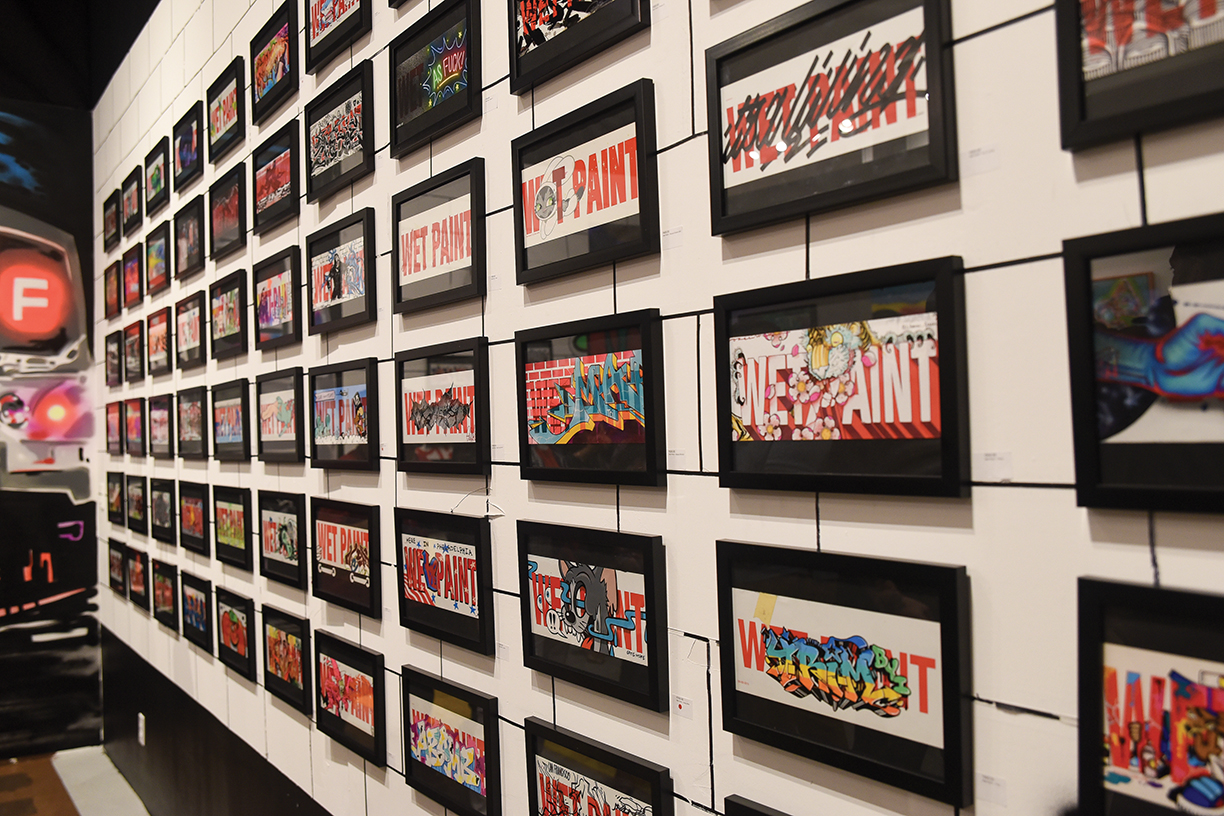
Above: The “Wet Paint” exhibit at the Museum of Graffiti in Miami, from artist Persue. Photo courtesy Museum of Graffiti.
At Right: “Party Felix” by Seen, one of many artists showcased at L.A.’s Mayfair Hotel. Photo courtesy the Mayfair Hotel.
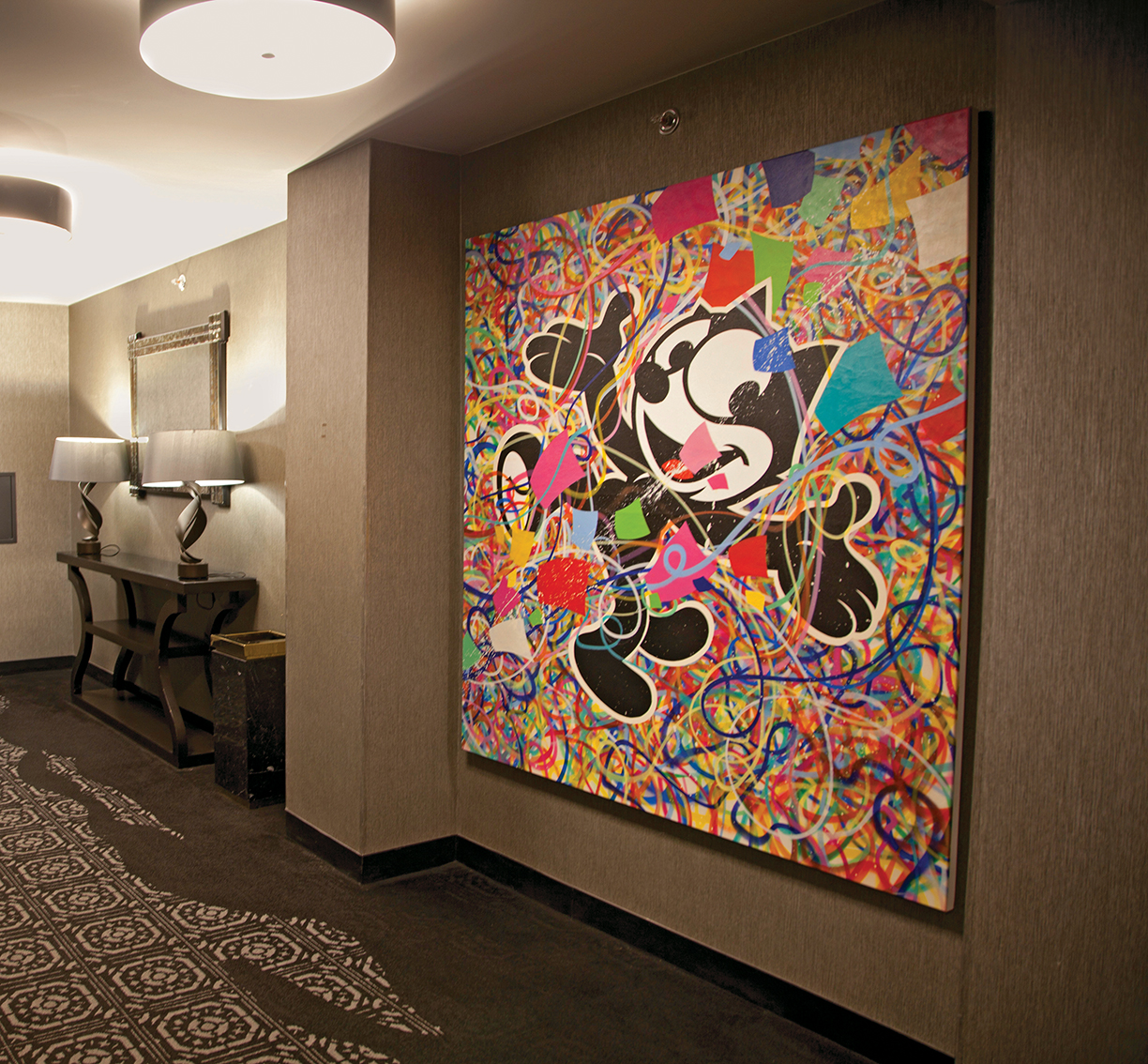
Explaining its location in a former shoe warehouse in Wynwood, Freidin reports, “The district’s relevance in the past 10 years is a product of the graffiti art that transformed a sleepy industrial neighborhood into the world-class arts destination it has become,” noting the windowless warehouses made ideal canvases for street artists. The Museum of Graffiti’s own building is entirely wrapped in 14 different murals by acclaimed local and international artists like Shoe, EZO and Abstrk.
The museum’s interior galleries feature rotating exhibits such as a recent compelling vignette from artist Persue, who famously removed the “Wet Paint” signs that New York City transit workers used to tape to subway cars after painting over graffiti art. Persue sent more than 70 of those very placards to artists around the world to use as canvases, all of which were incorporated into an exhibit whose physical design resembled a New York subway station platform.
Freidin explains that Miami’s graffiti art movement began in the early 1980s when some youth who got into trouble in New York were sent to South Florida to live with grandmothers or aunts. Insisting there is no way to repress the energies of an artist, Freidin reports, “The art erupted like a vengeance.”
The museum co-founder applauds the success of local graffiti artists like José Parlá, whose work moved from the streets of Miami to a mural inside Manhattan’s One World Trade Center, as well as multiple museum exhibitions and commissions in Tokyo, London and Havana. “He was immensely talented and continued to put in the work despite the stigma associated with graffiti art as vandalism,” says Freidin, who adds, “He’s probably one of the biggest names in contemporary art in the world.”
It was not easy for some museum curators to persuade their boards of directors that people previously labeled as vandals should be showcased in world-class fine arts facilities, but Freidin maintains society has evolved. She offers the former criminalization of marijuana as an analogy, citing its progression from disdain to broad acceptance. “It takes forward-thinking arts enthusiasts to take a risk,” and reports major corporations are hiring these artists as creative directors. “They recognize the power of this art,” says Freidin.
Robert Michael Provenzano, professionally known as CES, is a leading graffiti stylist whose signature aesthetic is now influencing the generation of artists currently emerging from the streets. His art, which began almost 40 years ago in his native Bronx, repeatedly got him into trouble as a young man, but after being flown to Munich to demonstrate his craft at a museum he realized there was a market for his skills. “My friends and I used to have to steal supplies, but now I’m a sponsored artist by a paint company in Barcelona,” says CES of how attitudes toward graffiti art have changed.
CES has since earned commissions from Nike and Palms Casino Resort in Las Vegas, in addition to collaborating on a mural adjacent to Miami’s Museum of Graffiti, where he was recently headlined. He finds it ironic that the artistic expression that was so strongly discouraged when he was a teenager is now a source of pride for his family. “I had no idea that if I stuck with it all those years, the whole world was gonna dig it,” reports CES.
The High Museum’s Michael Rooks notes, “The migration of some graf artists into the mainstream via museum collections and exhibitions underscores a familiarity with the language of the street that is widely recognized among urban audiences, as well as the influential role it has on global visual culture today.” He adds, “A fulcrum point in the migration from the street to the museum has to do with an artist’s knowledge and understanding of this legacy and ability to speak with urgency and artistry to contemporaneity.”
The ultimate measure of acceptance of art is the monetary value it commands in the marketplace. In 2017, an untitled work of Jean-Michel Basquiat, who began his career spray-painting walls in Lower Manhattan, sold for $110.5 million to a Japanese billionaire at auction, eclipsing his own personal record of $57.3 million.
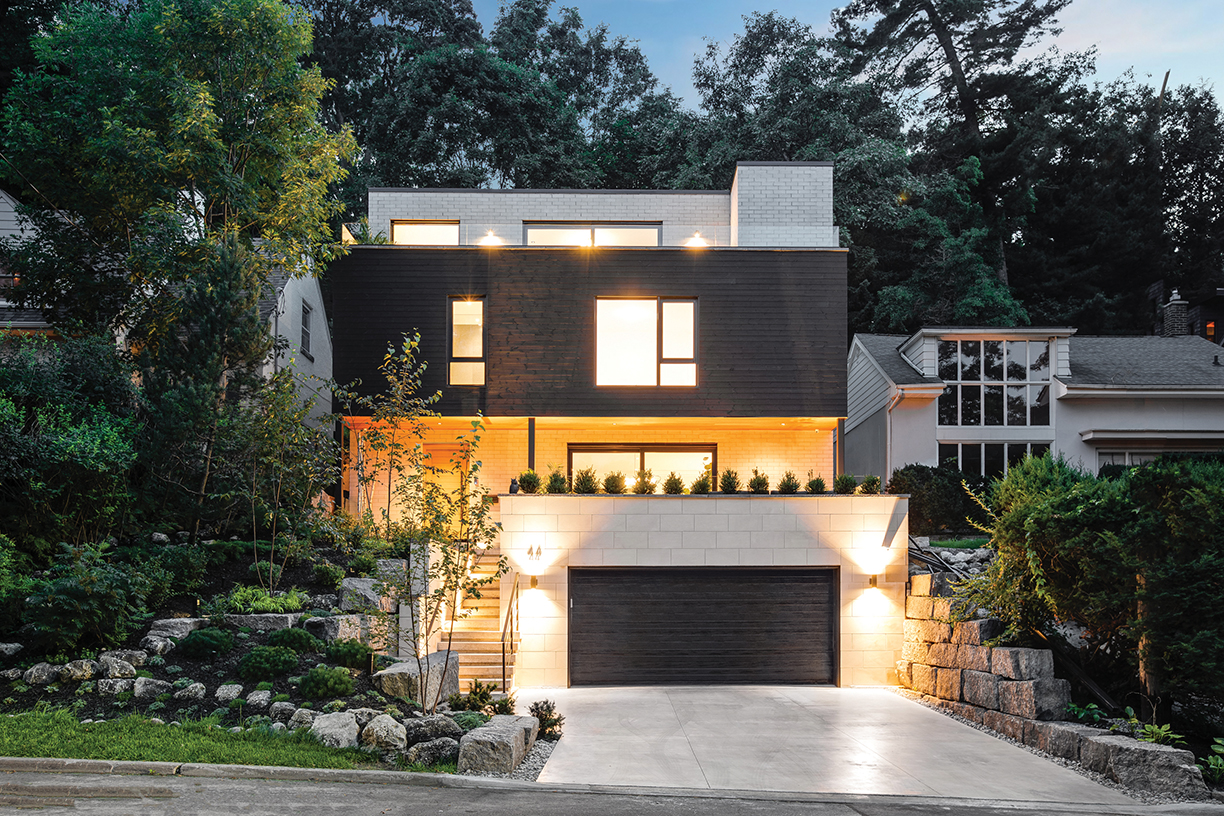
An expertly designed interior, breathtaking ravine lot, and premium locale directly across from the entrance to High Park and Grenadier Pond, complete this four-plus-one bedroom, six-bath home in Toronto, Ontario Canada.
This home perfectly suits both family and entertaining with its 4,441 square feet of living space over all levels, over 2,000 square feet of finished exterior space and four walk-outs and professional landscaping. Other features include Crestron automation, beautiful custom millwork, an elevator connecting all four levels, snow melt system, and much more.
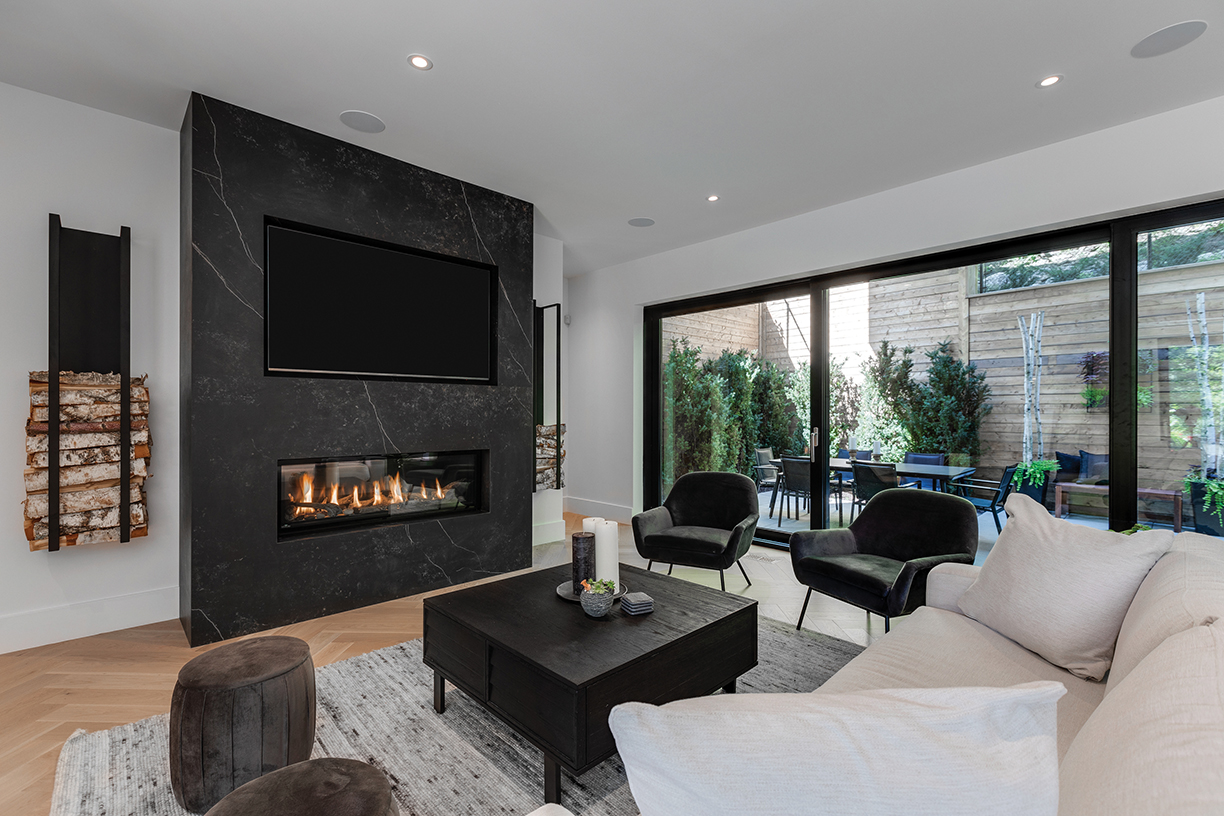

“Visitors love the fireplace and privacy of the front patio, which overlooks High Park,” says listing agent Paul Nusca of Berkshire Hathaway HomeServices West Realty, who is listing the home for $5.2 million. “This home feels like you are on a vacation and perfect for an affluent middle-aged couple.”
